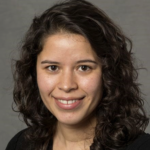
Andrea Gutierrez
Country of origin: Colombia
Host institution: Delft University of Technology
Hosting group: Medical Physics & Technology department
Project:
MuSiC: a novel Multi-Slit prompt gamma Camera for in vivo monitoring of proton therapy
Starting date: 15 January 2018
Abstract:
Proton beam therapy is a relatively new and exciting form of radiotherapy that is only now becoming accessible to most patients. Proton beam therapy enables the radiation dose to be more localised in the cancer tumour than conventional radiotherapy. This advantage can be used to reduce the exposure of the healthy tissue and vital organs surrounding the tumour to radiation.
However, the full potential of proton beam therapy is currently limited by uncertainties associated with the patient setup, daily anatomical variations, organ motion and dose calculation, which can compromise the treatment and result in underdosing the tumour and/or overdosing normal tissues. Thus, online monitoring of proton beam therapy is urgently needed. Nuclear de-excitation in proton-irradiated tissues produces prompt gamma rays, which can be imaged, offering a promising approach for real-time, in vivo treatment verification.
I will be based at TU Delft in Dr Dennis Schaart’s team at the Medical Physics & Technology department, where I will develop and test a novel design of a Multi-Slit prompt gamma Camera (MuSiC) for the non-invasive, real-time, in vivo monitoring of dose delivery in proton beam therapy.
The LEaDing Fellowship will offer me the opportunity to interact intensively with collaborators at the Holland Particle Therapy Centre (Holland PTC), Erasmus MC and LMUC, as well as other academic and industrial partners. I will also have the opportunity to expand my knowledge on the clinical application of physics and technology at the Clinical Physics department of Erasmus MC Radiotherapy.
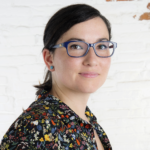
Aurora Dols Perez
Country of origin: Spain
Host institution: Delft University of Technology
Hosting group: Department of Bionanoscience
Project:
Biophysics of lipid nanotubes with a new approach: free-standing bilayers and optical tweezers
Starting date: 1 November 2017
Abstract:
Lipid nanotubes play a vital role in inter and intracellular communication and structural processes. They are found in several cellular organelles such as the endoplasmic reticulum, mitochondria and Golgi apparatus. The study of their biophysics is often carried on vesicles, supported lipid bilayers or living cells. However, these approaches present limitations and challenges such as to achieve asymmetric lipid distribution, to control dynamically the buffer and the membrane curvature.
My LEaDing fellowship project follows to investigate and characterize the dynamics and mechanics of lipid membrane tubes and tube networks with the use of novel free-standing membrane models combined with optical tweezers.
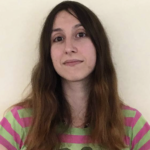
Clara Esteban Jurado
Country of origin: Spain
Host institution: Leiden University Medical Center
Hosting group: Human Genetics Department
Project:
Functional characterisation of deficiencies in Fanconi Anemia complementation group J.
Starting date: 2 January 2018
Abstract:
Germline biallelic mutations in FANCJ/BRIP1 cause Fanconi anemia, a rare genetic disease that results in bone marrow failure, growth abnormalities and a strong predisposition to cancer. Additionally, monoallelic mutations in this gene have been found to predispose to ovarian cancer with moderate penetrance. During my Ph.D. I performed germline whole-exome sequencing of individuals belonging to unrelated families with a strong aggregation for colorectal cancer and amongst other genes FANCJ was identified as a candidate for colorectal cancer susceptibility. The research conducted during this fellowship period will focus on the functional validation of the candidate variants in FANCJ gene identified in families with colorectal cancer aggregation during my Ph.D. and in other independent cohorts of colorectal cancer patients. These genetic changes will be generated in mouse embryonic stem cells using CRISPR/Cas9 technology and will be assayed for interstrand crosslink sensitivity and phenotypes associated with loss of homologous recombination.
In addition, two novel assays will be developed in order to probe two basic questions concerning FANCJ that are yet unresolved: i) what is the role of FANCJ in DNA double-strand break repair? While the protein is implicated in DNA break repair, it is completely unknown how it acts and in which stages of this biological process; ii) is mammalian FANCJ involved in cells to resolve secondary DNA structures that can occur during DNA replication and which can impede the replication machinery eventually leading to genomic instability when not properly and timely resolved?
Finally, a potential genetic relationship between FANCJ and the alternative end joining factor POLQ will be investigated and the mutational signatures present in cells with mutations in FANCJ and in double mutants of FANCJ/POLQ or other DNA repair genes will be studied.
This work will be performed in the lab of Prof. Marcel Tijsterman at the Human Genetics Department of the Leiden University Medical Center in collaboration with the group of Prof. Roland Kanaar located at the Erasmus Medical Center, Rotterdam.
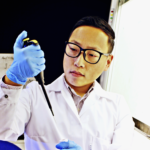
Dowon Bae
Country of origin: Republic of Korea
Host institution: Delft University of Technology
Hosting group: Chemical Engineering
Project:
Beyond the solar-fuel era: Single-device-based PEC flow battery
Starting date: 2 February 2018
Abstract:
In Netherlands, merely around 4% of total energy production is derived from CO2-neutral energy sources. In this context, photo electrochemical (PEC) flow battery has been investigated as a mean of simultaneously storing of the solar energy into chemicals, which can readily generate electricity via reversible reactions.
Flow battery system present facile electrochemical kinetics and its energy storage capacity is several times longer than that of conventional battery systems. However, low solar-to-chemical conversion efficiency and poor stability of the system due to corrosion greatly hamper its wide implementation. Herein, the proposed project aims for a breakthrough in a realization of a stable and efficient PEC flow battery system using a wide bandgap-based bifacial photo electrode architecture.
The proposed work will be executed for two years at Prof. Wilson Smith’s group at the Delft University of Technology which is renowned as one of the leading groups in the PEC fuel conversion. Also, the in-situ X-ray study will be conducted using a synchrotron facility in collaboration with Prof. Marc Koper (Leiden University) for understanding degradation mechanism of the photo electrodes.
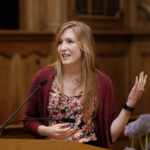
Elisabeth Timmermans
Country of origin: Belgium
Host institution: Erasmus University Rotterdam
Hosting group: Erasmus School of History, Culture and Communication
Project:
Why are you swiping? An innovative approach to study motives, expectancies and (un)successful interpersonal interactions on mobile dating apps
Starting date: 1 December 2017
Abstract:
I would like to introduce you to Lisa, a 25-year old woman who is looking for a romantic partner. She downloads the mobile dating app Tinder. She swipes right on men she could imagine herself dating. She matches with Frank, but abruptly ends the conversation when Frank says he and his friends would love to hear her best joke. Not much later she matches with Leonard, who tells her he is looking for female friends; he is madly in love with his boyfriend. Lisa is worried she will never find a partner on Tinder. How can I help Lisa have more successful interactions and attain her goal?
Recently, an expanding body of literature has investigated mobile dating applications such as Tinder. The majority of these studies have explored users’ motives, self-presentation and whether they facilitate casual sex. What has not been examined, however, is the online interpersonal process (or computer-mediated communication, CMC) occurring between two individuals after they match. While online dating sites often allow for online relationship development, the use of GPS in mobile dating apps minimizes the time between an online and offline encounter, resulting in an accelerated tempo of (short-term) interactions. Yet, several studies found that only a small proportion of matches between users actually lead to an offline encounter, suggesting that these online interactions are often not that successful in generating offline encounters. This points to the importance of studying online interactions. It is worthwhile to gain more information on the online interpersonal process in order to help users have successful interaction on mobile dating applications. In doing so, I will conduct both in-depth interviews and experiments and interpret my findings through the theoretical framework of Expectancy Violations Theory.
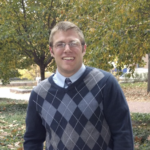
Ian T. McCrum
Country of origin: United States of America
Host institution: Leiden University
Hosting group: Leiden Institute of Chemistry
Project:
Combining experiment and atomistic scale computational modeling to study the electrode-electrolyte interface
Starting date: 1 September 2018
Abstract:
Increasing our usage of renewable energy, including wind and solar, will reduce our greenhouse gas and pollutant emissions and reduce our dependence on finite, non-renewable resources such as coal and oil. However, many sources of renewable energy are intermittent, necessitating the use of energy storage technologies for when the wind is not blowing or the sun is not shinning. Electrochemistry is a powerful tool which can be used to store this energy, by converting electrical energy to chemical energy and vice-versa at high efficiency.
However, many electrochemical reactions, including hydrogen oxidation/evolution, oxygen reduction, and carbon dioxide reduction, show an unexpected and sometimes complex dependence on the pH and composition of the electrolyte in which these reactions are carried out. In this project, we will determine the mechanism by which pH and alkali metal cations affect the rate of the hydrogen oxidation and evolution reactions on metal electrode surfaces. The proposed research will involve both computational and experimental work on well-defined surfaces within the group of Dr. Marc Koper at Leiden University. Once we gain a fundamental understanding of the mechanisms of these pH and cation effects we will collaborate with Dr. Wilson Smith’s group at the Delft University of Technology. With his group we will apply this knowledge to design improved electrolytes and lower-cost catalysts for solar photo-electrochemical water splitting, where sunlight can be used to directly produce hydrogen fuel from water.
The fundamental insight we will gain on the electrode/electrolyte interface will also allow us to better understand these electrolyte effects on other reactions. These reactions include oxygen reduction/evolution and carbon dioxide reduction, where carbon dioxide, a greenhouse gas, can be converted into high value fuels and chemicals using renewably generated electricity.
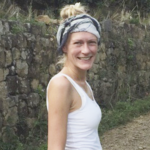
Fernande Pool
Country of origin: The Netherlands
Host institution: Erasmus University Rotterdam
Hosting group: International Institute of Social Studies
Project:
Social justice under secular liberalism: Muslims’ everyday ethics and human development in India and the Netherlands
Starting date: 30 April 2018
Abstract:
The proposed multidisciplinary research is a comparative study of Muslims’ everyday ethics under secular liberalism in India and the Netherlands. Secular liberalism has so far been unsuccessful in guaranteeing equal human dignity and especially in a time of polarisation and anti-Muslim sentiments it is vital to gain better insights in what human dignity means for a discriminated religious minority in a secular country and crucial to improve the policy and development frameworks that aim for inclusive social justice.
The goal is of the research is to contribute to academic, policy and public debates on migration, social justice and multiculturalism, related to religious minorities and secular governance arrangements in general and to the Muslim population in India and the Netherlands in particular. The research involves: (I) a study of forms and practices of secular liberal governance in India and the Netherlands, including their intellectual underpinnings; (II) ethnography of everyday ethics of the Muslim minority in India and the Netherlands; (III) a comparative exploration of how secular governance can impact on the ethical life of a religious minority; (IV) evaluation of how I), II) and III) can inform scholars’ and policy makers’ understanding and implementation of human development and security frameworks in a secular state with regards to religious minorities.
Findings from original ethnographic research in the Netherlands, to be undertaken during the Fellowship, will be put into dialogue with findings from my PhD research in India and both Indian and the Dutch data will be explored within the human development and human security frameworks. The research is based at the International Institute of Social Studies (ISS-EUR); involves collaborations with Leiden University CA-DS, LUCIS and LUCSoR; and a secondment at The Hague Institute for Global Justice.
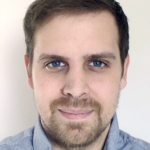
Gabriel Forn-Cuní
Country of origin: Spain
Host institution: Leiden University
Hosting group: Institute of Biology - Animal Sciences and Health
Project:
Autophagy stimulation and improving host defence against Aspergillus infections
Starting date: 13 November 2017
Abstract:
Invasive Aspergillosis is a life-threatening disease that causes high-mortality in immunocompromised patients due to the germination of Aspergillus spores inside host organs, mainly the lungs and in its most serious manifestation, the brain. Cells of the innate immune system, as circulating and tissue-resident macrophages and neutrophils, are the first line of defence against spore germination. Recently, the specialized autophagy pathway Lc3-associated phagocytosis (LAP) has been identified as an important fungicidal mechanism used by innate immune cells. However, Aspergillus spores incorporate immune-evasion mechanisms in their cell wall, as hydrophobins. Importantly, the melanin present in the cell wall inhibits LAP and prevents the killing of the germinating spores. Therefore, lack of activation of the host autophagy response appears to be a limiting factor in the defence against Aspergillus.
With this project, we will use the zebrafish embryos to study if autophagy stimulation can improve host defence against Aspergillus infections in vivo. For this purpose, we will perform a detailed characterization of the autophagy activation –and related pathways as LAP– in the innate immune cells interacting with the fungal pathogen, from the initial internalization to the first stages of hyphal growth. A collaboration with the Erasmus Medical Centre Rotterdam will provide insights into the importance and behaviour of brain local immune cells (as microglia) during the infection. We also aim to investigate which fungal cell wall components, in addition to melanin, are involved in the resistance of Aspergillus to this process. Finally, by genetically or chemically stimulating the autophagy response, we hope to determine whether this pathway presents a potential therapeutic target for the treatment of Aspergillus infections.
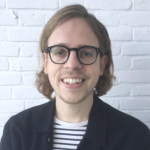
Geert-Jan Will
Country of origin: The Netherlands
Host institution: Leiden University
Hosting group: Institute of Psychology
Project:
Unraveling the neural basis of self-esteem in adolescent depression
Starting date: 1 February 2018
Abstract:
Depression is the leading cause of illness and disability, affecting more than 300 million people worldwide. More than half of people who suffer from depression have their first symptoms during adolescence. Low self-esteem is a major contributor to the development of depression among adolescents.
The goals of this project are: 1) to elucidate the brain mechanisms involved in changes in self-esteem when adolescents learn what other people think of them, 2) to test how these mechanisms are affected in depression and 3) to predict improvements and declines in depressive symptoms through combining measures of brain activity with reports about daily experiences collected using smartphone applications.
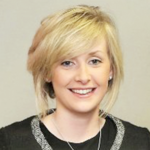
Hilary Barrett
Country of origin: Ireland
Host institution: Erasmus Medical Center
Hosting group: Department of Cardiology
Project:
Towards the Development of a Molecular, Morphological and Mechanical Model for the Characterisation of Carotid Plaque Rupture
Starting date: 1 October 2017
Abstract:
Catastrophic stroke is a global leading cause of death. 30% of strokes is triggered by the rupture of a vulnerable carotid artery plaque which can be characterised by certain morphological features. This project will address a critical challenge in biomechanical cardiovascular research using a novel integrated molecular-mechanical approach. In this regard, 3 fundamental functional layers containing imaging and mechanical information must be addressed before the predictive power of molecular imaging techniques can be implemented for plaque rupture; 1) inflammation imaging, 2) micro calcification imaging and 3) biomechanical stress analyses.
The non-invasive multimodal molecular imaging aspect of this project will involve collaborations with Prof. Beekman CEO/founder of MILabs industry and his partnered research group in the Department of Radiation Science and Technology at TU Delft who is an internationally recognised leader in the development of nuclear systems and technology. The use of novel tracers that direct target molecular processes involved in plaque rupture will be utilised to image inflammation by single photon emission computed tomography (SPECT) and micro calcifications by positron emission tomography (PET).
Additionally, specialised physiological plaque rupture experiments, which can emulate stresses required to induce rupture, will be performed to acquire the stress information and will be integrated with molecular imaging. This project ultimately creates an interdisciplinary collaboration between the Departments of Radiology & Nuclear Medicine and Biomedical Engineering at Erasmus MC resulting in the integration of the 3 functional layers and thereby disclosing the key drivers in plaque rupture for the development of a plaque rupture risk screening protocol.
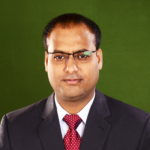
Hiranya Sahoo
Country of origin: India
Host institution: Delft University of Technology
Hosting group: Department of Geosciences and Engineering
Project:
Devising a unified knowledge base in river-avulsion dynamics: deconstructing process-product linkage via coupled forward and inverse modeling
Starting date: 1 February 2018
Abstract:
Rivers are one of the most prominent geomorphic elements currently on the Earth and fossilized features on the planet Mars. River avulsion, a causative fluvial process, has profound implications to our socioeconomic prosperity. Given such importance, avulsion analysis has been a pivotal scientific pursuit, on the Earth as well as on Mars. However, in our pursuit of improved understanding on avulsion dynamics, a major lacunae stands out: inverse modeling (interpreting past processes from the rock record) and forward modeling (generating synthetic deposits from known processes) studies have been progressing rather in parallel and the cross-evaluation is rare.
Integration of inverse and forward modeling is key to advancing our understanding of avulsion processes and products. Employing Delft3D simulation and ancient data, the proposed research will target a coupled model-field analysis to investigate avulsion dynamics through cross-evaluation. Results from this mutually-validated study will be then used in formulation of a common knowledge base leading to development of new prediction tools and a fuller avulsion analysis at multi-disciplinary and cross-planetary levels. The execution of the proposed research includes central base at Delft University of Technology and potential collaboration with Leiden University and Deltares Institute.
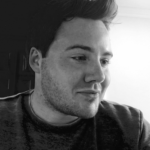
Jim A.C. Everett
Country of origin: United Kingdom
Host institution: Leiden University
Hosting group: Institute of Psychology
Project:
Parochial morality: The role of deontological and consequentialist moral judgments in regulating group behavior
Starting date: April 2018
Abstract:
As humans, we have a remarkable tendency to seek out and identify with people like “us” while distancing ourselves from “them” and it is in our group-based character that the angels and demons of human nature can be seen: the shining success of intragroup cooperation that has given us liberal democracy and social welfare; and the darkness of intergroup conflict that has given us genocide and war.
Interestingly, these well-documented tendencies appear at odds with universalistic moral rules that people adhere to and hold others accountable for (e.g. “thou shall not kill”; “treat others as you’d wish to be treated yourself”). And most intriguingly, we are not only more likely to act in a moral way towards people with whom we share a group membership, but these group memberships fundamentally shape what we think a moral act is.
How can this peculiarity be explained? And once we understand it, how can we overcome these biases to bring about a better state for the world? During my time at Leiden, I will be conducting research on parochial morality: the way that moral judgments intimately shape group processes and vice versa.
Specifically, I will explore the role that rule-based (“deontological”) versus consequence-based (“consequentialist”) moral judgments play in influencing the way we undergo sacrifices to help people like ‘us’ (“intragroup cooperation”) more than we help people like ‘them’ (“in group favouritism”), while simultaneously neglecting or even harming ‘them’ (“intergroup competition”).

Johanna Kostenzer
Country of origin: Austria
Host institution: Erasmus University Rotterdam
Hosting group: Erasmus School of Health Policy & Management
Project:
“Eggsplaining” Decision Making in Health Care Governance: A Multi-Level Comparative Study of Social Egg Freezing in the Netherlands and Austria
Starting date: 1 February 2018
Abstract:
With the further development of reproductive technologies, elective cryopreservation of oocytes or “Social Egg Freezing” (SEF) has emerged as an alleged option for women to postpone motherhood.
In Europe the practice remains to be highly controversial due to different value perceptions and bioethical concerns. The Netherlands and Austria follow opposing regulatory strategies. Analyzing the decision making process with regards to SEF in the countries concerned is considered necessary to better understand healthcare governance with respect to normative issues.
The application of a method mix including document analysis, Q methodology and focus groups shall enable the development of a decision making framework for normative issues in health care with practical relevance for policy makers.
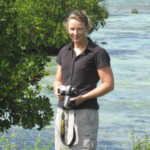
Jolanda Luksenburg
Country of origin: The Netherlands
Host institution: Leiden University
Hosting group: Department of Conservation Biology, Institute of Environmental Science
Project:
Evaluating ecosystem resilience with environmental DNA
Starting date: 1 January 2018
Abstract:
There is considerable theoretical and some empirical evidence that ecosystem composition is regulated by apex predators and that predators may be important for the resilience of ecosystems. Because apex predators are declining in many ecosystems, there is an urgent need to develop methods that can detect the early warning signs of an impending ecosystem collapse.
The ecosystem effects of the removal of apex predators may be modelled using the flow of biomass through the system. However, this requires detailed biomass data which are difficult to obtain and prone to sampling errors using traditional, visual techniques.
In this study, I use DNA isolated from river water (environmental DNA) to test the hypotheses that the Orinoco river system, Venezuela, is top-down controlled by top predators and that their removal leads to a strong loss in ecosystem resilience.
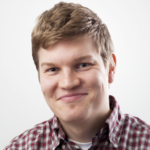
Jukka Hirvasniemi
Country of origin: Finland
Host institution: Erasmus Medical Center
Hosting group: Department of Radiology & Nuclear Medicine
Project:
Extraction of radiomic features from magnetic resonance images for assessment of osteoarthritic changes in bone
Starting date: 31 December 2018
Abstract:
Osteoarthritis (OA) is the most common joint disease in the world and it imposes a large economic burden on the society. OA affects all tissues in the joint but the etiology of primary OA and the role of subchondral bone are still unclear.
The extraction of the relevant quantitative information from medical images and linking it into OA disease process could potentially reveal unknown information about the development and progression of OA. Thus, the aim of this project is to apply quantitative image analysis methods on magnetic resonance (MR) images of the knee derived from large clinical and population-based studies on OA.
During the project, the association of quantitative MR image features to prognosis and status of OA, biomarkers and genetic data will be investigated. As a result of this project, new information about the role of bone in OA and about the linkage between MR image features and OA are expected.
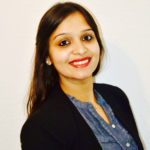
Jyaysi Desai
Country of origin: India
Host institution: Leiden University Medical Center
Hosting group: Laboratory of Rheumatology
Project:
Investigating the role of neutrophils in Rheumatoid Arthritis
Starting date: 1 January 2018
Abstract:
Rheumatoid arthritis (RA) is an auto-immune disease in which auto-antibodies against modified proteins are important. Currently, a novel concept is emerging indicating neutrophil extracellular traps (NETs) as chronic antigen source that perpetuates and drives the auto-immune response.
In RA, different Anti- Modified Protein Antibodies (AMPA) have been described and my host laboratory at LUMC, Leiden recently discovered that these AMPA can be cross-reactive towards different modifications such as citrullinated and acetylated residues, both of which are found on NETs. At present, it is not known which post translational modifications are precisely recognized on NETs and whether a particular location on histones is required to induce proper antigen-recognition leading to a putative vicious circle feeding the auto-immune response and inflammatory reaction.
Likewise, it is not known which forms of NET formation leads to the formation of “AMPA-genic NETS”. As a LEaDing post-doc fellow, I plan to address these questions with the ultimate aim of developing new therapeutic targets for RA.
The project is an inter-disciplinary project in the fields of rheumatology, immunology and chemistry. More specifically, I will collaborate with the Leiden Institute for Chemistry at the Leiden University to generate a range of ‘artificial histones’ with specific and defined post translational modifications at specified sites to study recognition of NETs by AMPA and their “AMPA-genic” potential. Furthermore, by investigating which molecular mechanisms of neutrophil cell death and NET formation lead to recognition by AMPA, I plan to investigate novel therapeutic targets for RA and inflammation.
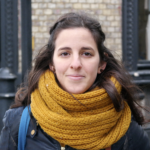
Paula Ruibal
Country of origin: Uruguay
Host institution: Leiden University Medical Center
Hosting group: Department of Infectious Diseases
Project:
Investigation of a novel immune cell type in human infectious disease: characterization of the specificity, function and pathogen killing ability of T cells restricted by non-classical HLA-E molecules in Tuberculosis
Starting date: 15 January 2018
End date: 30 June 2018
Abstract:
Based on recent work from the Tuberculosis Research group in the Department of Infectious Diseases at LUMC on the discovery of highly in vivo expressed Mycobacterium tuberculosis (Mtb) antigens, using genome wide bioinformatics and immunomics approaches, I here propose to identify Mtb derived epitopes presented by HLA-E from the most immunogenic and protective antigens identified thus far during Mtb infection.
HLA-E restricted Mtb specific CD8+ T-cells represent a novel human T-cell subset, which has only very recently been identified and which could be highly relevant during the immune response to Mtb infection. HLA-E has two alleles, HLA-E*01:01 (ER) and *01:03 (EG), which differ in only one single amino acid at position 107 (arginine to glycine) outside the peptide binding groove, limiting the number of peptides that can bind to it and rendering it an ideal presentation molecule for conserved Mtb antigens in a vaccine context .
HLA-E expression is enriched in Mtb phagosomes compared to classical HLA class Ia family members, thus facilitating HLA-E loading by Mtb peptides in infected cells. In contrast to most other HLA class I molecules, HLA-E is relatively resistant to down-regulation by HIV, a co-infection that is responsible for most of the TB related mortality.
Identification of novel epitopes will be performed in close collaboration with Dr. Thomas Abeel at TU Delft during a 3-month secondment where I will implement an improved prediction algorithm for the selection of the best candidate epitopes. I will subsequently determine the ability of the identified epitopes to induce superior CD8 T cell activation and Mtb killing in infected human macrophages.
I will further dissect the molecular determinants that control Mtb peptide binding and presentation by the two HLA-E alleles in relation to T cell activation. The resulting knowledge will be harnessed for TB vaccine development.
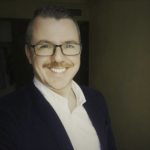
Nathan John Albury
Country of origin: Australia
Host institution: Leiden University
Hosting group: Leiden University Centre for Linguistics
Project:
Rationalising multilingualism in Malaysia from an interethnic perspective
Starting date: 15 October 2018
Abstract:
This project straddles sociolinguistics, the sociology of race and ethnicity, Southeast Asian studies, and socioeconomics. Malaysia is multicultural but ethnocratic whereby laws have determined that ethnic Malays, as Muslim natives, deserve more economic, cultural and linguistic privileges than the local Chinese and Indian Malaysian minorities. Despite their citizenship, these non-Malays are constructed by Malay ethnonationalism as perpetual migrants, and their languages play no formal role in defining contemporary Malaysia. Despite, or perhaps because of this hegemony, Malaysia is extremely multilingual. Chinese, Indian and indigenous languages are used parallel to Malay, such as Cantonese, Hokkien, Tamil, Telugu, Iban and Kadazan.
However, the Chinese have appointed Mandarin as its lingua franca even though it is not a local heritage language, and Indian homes are sooner shifting to English than to Malay. English has indeed remained a language of prestige since British colonisation, however Bahasa Rojak – a fluid mix of languages that manifests creatively and spontaneously – characterises informal interethnic talk, and Manglish has emerged as a local variety of English.
This project examines this multilingualism through the folk linguistic perspectives of Malaysian youth. It analyses how they, in their own terms, perceive, understand and rationalise multilingualism as a Malaysian social reality, the linguistic aspects of nation-building, their own multilingual language practices and linguistic citizenship, Malaysia’s language policy, linguistic epistemologies and ideologies within ethnic groups, and the nexus between language in socioeconomic mobility.
With Malaysia as a case study, the research helps to decolonise sociolinguistics - which remains dominated by epistemological assumptions from the global North - by analysing grassroots cognitive engagement with multilingualism in the global South. To achieve this, the project advances the poststructuralist turn in sociolinguistics to decentralise knowledge authority, and it further expands the purview of folk linguistics: what non-linguists claim to know about language and how that knowledge structures action and discourse.

Rosaleen March
Country of origin: United States of America
Host institution: Leiden University
Hosting group: Institute of Environmental Sciences, Department of Conservation Biology
Project:
Application of remote sensing to model spatiotemporal distribution of functional diversity
Starting date: 6 November 2017
End date: 31 October 2018
Abstract:
Functional diversity among species communities allows ecosystems to function optimally and provide essential services for society, e.g. carbon sequestration and climate regulation and also determines the ecosystem’s resilience to environmental changes, such as climate change.
Therefore, functional diversity is of direct economical and societal importance. Mapping functional communities, given their species interactions, is more ecologically meaningful than mapping single traits and more useful for understanding ecosystem functions. With species traits being emphasized as Essential Biodiversity Variables, information on functional diversity for international policy will become increasingly important, but we currently lack the tools for its assessment and its drivers across spatial and temporal scales are not yet clear.
Temporal dynamics of functional diversity has not been investigated while this information would give important insights into how ecosystem functioning responds to change.
In this project, I will determine the spatiotemporal dynamics of functional diversity and its drivers using remotely sensed data from hyperspectral vegetation signatures, vegetation structure, time-series of earth observation data and abiotic environmental data, incorporating them into a distribution modelling framework. Models will be trained and tested using detailed plot data.
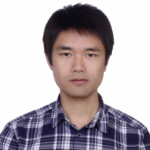
Weiming Wang
Country of origin: China
Host institution: Delft University of Technology
Hosting group: Department of Design Engineering
Project:
Topology Optimization for Additive Manufacturing: Considering Critical Process-Dependent Loads
Starting date: 1 March 2018
Abstract:
In this project we investigate the fundamental problem of considering process-dependent loads in structural optimization. Structural optimization is the classical engineering discipline of finding the structure which is optimal with respect to some performance measures, e.g. maximizing structural stiffness subject to a minimum amount of material volume.
The performance is typically measured and optimized for the entire, i.e. the final, structure, while structural properties at intermediate stages are not taken into account at all. In combination with additive manufacturing, topology optimization is the method of choice as it can fully explore freedom in shape and layout enabled by additive manufacturing.
In this project, we will derive new formulations to incorporate process-dependent critical loads into structural (topology) optimization and will develop efficient numerical algorithms for solving the 3D optimization problem. The solution will eliminate the necessity of additional supports for maintaining structural stability in (large scale) additive manufacturing, leading to more economic, more accurate and faster fabrication.
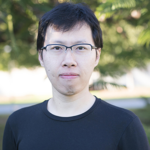
Ka Leung Lam
Country of origin: China
Host institution: Delft University of Technology
Hosting group: Department of Water Management
Project:
Integration of water, energy and material flows to achieve sustainable urban solution
Starting date: 1 November 2018
Abstract:
Cities account for the majority of resources consumption of humanity and contribute 70 to 80% to global CO2 emissions. Water is by far the largest portion of this urban resource flow in term of shear mass. The urban water system has traditionally been designed to serve purposes of bringing in treated drinking water and removing wastewater generated. A similar linear view is common in other resource flows like energy and nutrient flows.
The interlinkages between these flows and opportunities within cities have not been well acknowledged historically. Recent years has seen a growing interest in capitalising on these opportunities because of growing pressures from water scarcity, urban population growth, resource depletion, increasing energy cost and climate change. Despite a growing interest, there are still major knowledge gaps (e.g. impact of scale, spatial and temporal impact, life-cycle impact, trade-offs/interactions) and lack of tools for decision makers to identify the appropriate strategies in a given context.
This project aims to improve our knowledge and develop decision support tools to help water utilities and government agencies make informed decisions about water, energy and material flow management and their integration in cities. The focus of this project will be on the interactions of water cycles with energy and material flows in cities.
The research will quantify the potential of water, energy and material flow management opportunities; and develop decision support tools for identifying and prioritizing opportunities. Ultimately, this will help identify more sustainable solutions for enhancing urban resource efficiency and reducing greenhouse gas emissions.
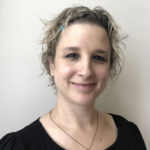
Adva Eichengreen
Country of origin: Israel
Host institution: Leiden University
Hosting group: Institute of Psychology, Department of Developmental and Educational Psychology
Project:
Creating an inclusive school environment for deaf and hard of hearing children
Starting date: 1 August 2018
Abstract:
A world-wide increasing number of deaf and hard-of-hearing (DHH) children go to regular schools, where they are the only children with hearing loss in their class. Educational integration, however, is not a guarantee for social inclusion, as many of DHH children in regular classes suffer from loneliness and social difficulties. This can have a negative effect on their social, mental and even educational development. In this project we will examine which factors in the school environment are important for these children's social inclusion.
Together with the faculty of Architectural Design & the Built Environment in Delft University and by means of non-obtrusive technology developed at the department of Computer Science in Leiden University, this project will uniquely assess acoustic characteristics of the school area, not only of classrooms but also of social areas such as the playground or the corridors, to identify factors that impact the quality of DHH children’s social interactions. We will also look for the perspectives of DHH children themselves about accessibility in the social context.
In addition to communicational barriers, DHH children may face unacceptance by hearing peers. It is not easy for children who have differences for various reasons, to achieve a sense of belonging in a society that is not aware, adapted or accepting of people who are considered as ‘different’. This project will also focus on cognitive and emotional attributes of the classmates which can predict the degree of their openness and willingness to be friends with DHH children. The outcomes of this research will potentially support future interventions to promote inclusive school environment.

Alise Renee Muok
Country of origin: United States of America
Host institution: Leiden University
Hosting group: Biology Institute, Ariane Briegel Laboratory
Project:
Determining the structure of a chemotaxis kinase complex with receptor mimetics and cryo-EM
Starting date: 1 November 2018
Abstract:
Many pathogenic bacteria are known to rely on bacterial chemotaxis to properly navigate host environments for survival. Underlying chemotaxis is a sophisticated sensory system that controls cell movement in response to chemical changes in the surroundings. Examples of such organisms are Vibrio cholerae and Burrelia burgdorferi, the pathogens responsible for cholerae and Lyme’s disease, respectively. The chemotaxis sensory apparatus generates high sensitivity and wide dynamic range through cooperative interactions among transmembrane receptors, the histidine kinase CheA, and adaptor protein CheW. Because homologs of CheA are not found in humans, targeting the chemotaxis system through CheA-directed antibiotics offers an attractive strategy for treating such diseases.
Unraveling the molecular mechanism of how the receptors engage and regulate CheA would greatly advance our current understanding of this remarkable system. Isolating homogenous ternary chemotaxis complexes that consist of receptor mimetics with CheA and CheW will allow me to determine the three-dimensional structures of full-length CheA in the kinase-on and kinase-off states. Structural analysis of these complexes promise to reveal key conformational differences in CheA, as well as the nature of interactions among components that are responsible for changes in CheA activity.
My preliminary data, collected as a graduate student at Cornell University, has provided a hypothetical model of the deactivated ternary complex. I aim to improve this model by determining the 3D structure of the complexes via single-particle cryo- electron microscopy at Leiden University’s NeCEN facility. Improving the current model for CheA modulation will not only advance our understanding of the chemotaxis system, but it will also provide the scientific community new insight into signal transduction mechanisms in general.
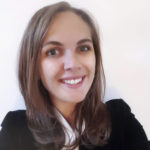
Amy Cochrane
Country of origin: Ireland
Host institution: Leiden University Medical Center
Hosting group: Department Anatomy and Embryology
Project:
Utilizing innovative organ-on-chips to model genetic vascular disease using human pluripotent stem cells
Starting date: 1 November 2018
Abstract:
Vascular disease is a major cause of death and disability in the western world. Most vascular pathology stems from dysfunction in the EC monolayer that lines all our blood vessels acting as an essential barrier between the blood and vessel wall.
In this project I will use patient specific induced pluripotent stem cell (iPSC) derived vascular cells cultured in microfluidic devices to generate robust 3D vessels. The ‘vessel-on-a-chip’ can then be used to elucidate vascular physiology and pathophysiology.
Using this combination of genetically matched pairs of hiPSC-ECs with Organ-on-Chip devices provides a platform to create accurate vascular models while reducing the requirement for animal testing. We will be able to investigate responses of hiPSC-ECs to stimuli in a biological environment resembling that in the human body. Furthermore, utilizing hiPS-ECs allows testing of an individual patient response to candidate drugs which brings personalised medicine closer to a reality.
I will be working in the LUMC under Professor Christine Mummery and Dr Valeria Orlova which will provide me with the skills and opportunities in stem cell models of vascular disease along with collaborations through scientific groups such as the Netherlands human organ and disease modelling technology (hDMT) consortium.This will allow me to be part of the ongoing `Vessel-on-a-Chip' research theme and the network of researchers and centres involved, providing me with new skills, knowledge and collaborations in this interdisciplinary research.
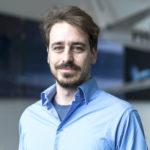
Antonio Raimondo
Country of origin: Italy
Host institution: Delft University of Technology
Hosting group: Aerospace Structures and Computational Mechanics group
Project:
Towards a computationally-efficient damage prediction for long-life aerospace composite structures
Starting date: 15 August 2018
Abstract:
The current demand for efficient and cost-effective vehicles with high safety standards drives the aerospace research to investigate innovative materials and new structural architectures. In order to meet these needs, composite materials have experienced, in the last decades, a rapid diffusion thanks to their outstanding properties in terms of specific strength and stiffness.
However, the estimation of fatigue-life of a composite component, which means the number of repeated cyclic loads that the structure is able to sustain before the breakdown, is still an open challenge. Although several approaches exist in literature able to address this issue at the coupon level, they are yet not suitable to simulate fatigue damage propagation in full-scale aerospace components, due to the huge computational costs required.
The objective of the project is to develop computationally-efficient numerical methodologies able to accurately predict fatigue-induced damage in large-scale composite structures, such as stiffened panel. This research has the potential to contribute to the academic understanding of damage mechanisms in composite materials, but more than this, it may have an impact on the aeronautical and aerospace industry by providing tools and methodologies able to assist in designing long-life composite structures, leading to a significantly reduction of certification costs and time.
The research activities will be carried out at Delft University of Technology in the Aerospace Structures and Computational Mechanics group involving the collaboration of the NASA Langley Research Center and the Fokker Technologies.
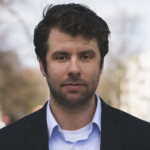
Bastian Ravesteijn
Country of origin: The Netherlands
Host institution: Erasmus University Rotterdam
Hosting group: Department of applied economics
Project:
Improving access to mental health care
Starting date: 1 February 2019
Abstract:
Some individuals with mental illness do not receive enough treatment, while others receive too much. This project uses the 2012 introduction of a copay in the Netherlands as a natural experiment to investigate the extent to which out-of-pocket payments can ensure optimal access to mental health care. I will collaborate with the Leiden University Medical Center.
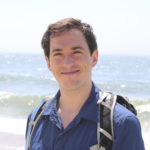
Carlos Javier Riumalló Herl
Country of origin: Chile
Host institution: Erasmus University Rotterdam
Hosting group: Department of Applied Economics
Project:
Income inequalities in life expectancy: A cross-country approach
Starting date: 1 September 2018
Abstract:
In the last century, life expectancy has increased around the world to the extent that individuals can now expect to live more than 70 years on average. Despite the progress, two important challenges remain and stand out. First, improvements in life expectancy have been unequal. Evidence across countries shows that while mortality has decreased considerably, the reductions have been much slower amongst individuals in lower socioeconomic status. Second, while we have identified policies that address mortality inequalities at early ages, less is known on how different health and social policies can narrow mortality and health inequalities at older ages.
In order to address the challenges above, it is first necessary to further our understanding of how longevity inequalities have evolved in different contexts. Current evidence from Europe suggests that mortality inequalities with regards to education and occupation have been widening, however there is little evidence of these trends with regards to income, a modifiable factor at older ages in contrast to education and occupation.
Second, few studies have evaluated the role of different social or health policies targeted to the elderly in reducing health inequalities. This proposal contributes to the agenda above by pursuing two ambitious objectives. The first is to use income household surveys and mortality registrars to develop estimates of life expectancy trends by income for three countries with different institutions and context- Brazil, the Netherlands, and the United States. This will provide a cross-national comparison that allows us to identify potential policies and institutions that may contribute to the narrowing or widening of mortality inequalities. The second objective is to go beyond the ecological analysis and use individual-level administratively linked data from the Netherlands to develop individual models of life expectancy by income. This will allow us to identify characteristics or mechanisms through which income may impact life expectancy at the individual-level.
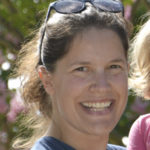
Cecil Meeusen
Country of origin: Belgium
Host institution: Erasmus University Rotterdam
Hosting group: Department of Public Administration and Sociology
Project:
How do ethnic minorities respond to adverse political conditions?
Starting date: 1 September 2018
Abstract:
For Western democracies, one of the most important repercussions of widespread and growing ethnic and cultural diversity is the rise of social conflicts on issues such as the integration of minorities and the demarcation of group identities. This ‘integration-demarcation’ cleavage not seldom results in conflictual intergroup relations, such as prejudice, political alienation, discrimination, and populist radicalization. As a result, some cities and neighbourhoods are more welcoming to ethnic minorities than other ones. How does this affect their mental well-being, political attitudes and voting behaviour? Do members of ethnic minorities more often report lower mental well-being in cities and neighbourhoods where the ethnic majority is less welcoming? And do they become more politically active under such conditions, or do they opt out from the political domain altogether? These are the questions I will try to answer during my two year Leading Fellowship at the Erasmus University of Rotterdam.
The Netherlands –Rotterdam in particular– provide a unique context to examine the consequences of polarization for populist attitudes and well-being. In the local elections of 2018, two opposing populist parties presented lists: the PVV of Geert Wilders, mobilizing feelings of cultural, economic and security threat from (Muslim) immigration and critiquing the political establishment for being too tolerant toward growing ethnic diversity; and the recent party Denk of Tunahan Kuzu, seeking to combat everyday racism and targeting disconnected Dutch with a (Muslim) immigrant background, most notably former guest workers and their descendants. A pivotal question is: how do interethnic relations affect the popularity of both party types and how does this affect mental well-being?
This interdisciplinary research project combines cultural-sociological insights on stigmatisation with insights from public health on mental well-being and insights from political science on political attitudes and behaviour. I will use survey research and quantitative research methods to analyze these questions.
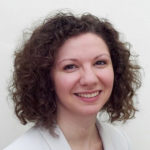
Cecilia Biaggi
Country of origin: Italy
Host institution: Erasmus University Rotterdam
Hosting group: Center for Historical Culture, Erasmus School of History, Culture and Communication
Project:
Minorities and Educational Exclusion: the cases of South Tyrol and Northern Ireland, 1918 – 1923
Starting date: 1 November 2018
Abstract:
My research aims at comparatively analysing educational exclusion affecting a linguistic minority and a religious minority in the aftermath of the First World War, in order to establish how and to what extent disadvantages suffered by the two groups in the education sector prevented their political and socio-cultural integration in their respective nation-states.
Thanks to its comparative approach, this project will question assumptions that often characterise national narratives by identifying common practices and contextualising peculiarities characterising different systems of educational exclusion.
It will provide innovative content and analytical models to several research fields ranging from history of education to the new political history; furthermore, it will contribute to public debates about the integration of minorities and migrants and the role of education systems in multicultural societies.

Dr. Charissa Granger
Country of origin: Aruba
Host institution: Erasmus University Rotterdam
Hosting group: Erasmus School of history, Culture and Communication
Project:
Steelpan music as a practice of knowing
Starting date: 1 September 2018
Abstract:
Discarded 55-gallon oil barrels were used for music-making in 1930s colonial Trinidad and Tobago; a period deeply shaped by discrimination of its performers. Often standing at the beginning of personal and political consciousness, music empowered performers, giving a sense of self-regard and -respect by mixing and transforming materials and musical structures, forming a symphonic steelorchestra. This project explores ways of knowing in music(-making), examining how a markedly musical way of being in, and relating to, the world is experienced in steelpan music. Concentrating on feelings that emerge in musical experiences, this project asks: What is being known in this musical way of knowing? And how is this knowing triggered by the experience of music-making? How does this way of knowing empower musickers —i.e. performers/listeners—in their everyday lived experience?
According to Kramer "knowledge in its most robust form, is never a matter of simply knowing what is true or what is false. Knowledge of the world, as opposed to knowledge of data, arises only in understandings that can neither be true nor false, that is, in understandings the epistemic form of which is the form of the aesthetic" (Kramer 2016: xiii). To understand steelpan music and performance along such conceptual lines requires methods for giving a written account of how this knowledge emerges in practice. Thus, this project also asks what analytical and methodological tools might be used to explore music as a practice of knowing?
This project explores forms of musical knowing and their implied epistemologies arising from the musical structures of steelorchestral arrangements and performances. It argues that steelpan music-making can be considered not only as a coping mechanism, but as an epistemology, asking: how does music, conceived as a practice of knowing, allow musickers to engage with and make sense of their environment, and thereby transform it?
This musical way of knowing has only been theoretically examined in music studies (Kramer 2016), and only skimmed in academic debates on modernity, post-colonialism, history and epistemology (Gilroy 1993; West 1999; Kun 2005). The project’s sense-based epistemology fills a gap by exploring steelpan music(-making) as a knowledge practice, considering music not only as a representational practice that expresses identity or acts of resistance. Instead, it focuses on how music(-making) makes this knowledge practicable and how the music-making experience empowers musickers to understand and cope, through music, with their socio-cultural, political and economic environment.
Within cultural and post-colonial studies, calls remain to consider alternatives to the text-centrism traditionally emphasized within Anglo-American scholarship (Quijano 2007; Mignolo 2012, 2007; Gilroy 1993). This project offers one such alternative, arguing that music studies’ contribution to discourses and research on belonging, dwelling, notions of home and remembering is valuable to those in other fields addressing these concerns, such as post-colonial and decolonial studies. In this way, the project contributes to debates in fields such as sensory studies (Classen and Howe 2014; Ingold 2011), sensory ethnography (Pink 2009), musicology (Hahn 2007; Le Guin 2006; Henriques 2011; Kramer 2016), and post-/decolonial theories, enabling an argument for sensuous ways of knowing in music.
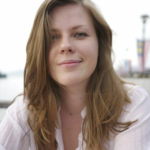
Charlotte Cecil
Country of origin: France/United States of America
Host institution: Erasmus Medical Center
Hosting group: Department of Child and Adolescent Psychiatry
Project:
Developmental pathways to child disruptive behavior problems: Bridging the gap between epigenetics and neuroscience
Starting date: 1 January 2019
Abstract:
Disruptive behaviour problems (DBPs) are one of the most common reasons for child treatment referral and a major risk factor for psychiatric problems later in life. Children with DBPs engage in a range of aggressive and antisocial behaviours (e.g. fighting, stealing, bullying), that affect their ability to follow rules and adapt to society, do well in school, and form healthy relationships with peers. Those who do not receive treatment are also at increased risk for many negative outcomes in adult life, including poorer mental and physical health, lower job prospects, more contact with the police and a lower quality of life. As a result, preventing and treating DBPs is a major public health priority.
We know from previous research that both genes and the environment play an important role in the development of DBP. However, how exactly this happens at a biological level remains unclear. In this project, I will investigate how DNA methylation – an epigenetic mechanism sensitive to both genetic and environmental influences – relates to children’s brain development and behaviour, in order to better understand pathways to DBPs. For this, I will use longitudinal data from the Generation R Study – one of the largest studies of brain development in the world – based at Erasmus Medical Centre, Rotterdam. I will also collaborate closely with Leiden University Medical Centre, a leading biomedical research centre at the forefront of the rapidly developing field of population epigenomics.
The knowledge generated from this project will lead to a better understanding of how DBPs develop, which can help inform the creation of more effective strategies for prevention and intervention.
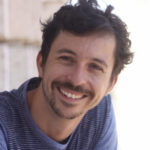
David B. Steffelbauer
Country of origin: Austria
Host institution: Delft University of Technology
Hosting group: Department of Water Management
Project:
DASH of Water
Starting date: 10 September 2018
Abstract:
Across the globe, water utilities face exceptional challenges due to ageing water infrastructure, population growth, financial and regulatory pressures, and climate change while new resources are ill-equipped to meet rising water demands. Thus, water companies are forced to operate their systems in a more efficient way; e.g. through leakage reduction, energy use minimization, better asset lifecycle management, water quality improvements, etc.
A growing number of utilities use hydraulic models to improve the performance of their water distribution systems. However, flow and pressure sensors in these systems had only existed at larger distribution pipes and measurements are sparse even today —resulting in computer models that are not sufficiently good for optimizing operations.
A relevant recent development is ubiquitous customer side smart metering and associated big data analytics. An innovative new way of combining hydraulic models and data from smart meters—recently available devices measuring and transmitting water usage of households in real-time—can help to quantify and reduce model uncertainties and, hence, increase water system’s operational efficiency in a wide range of applications.
This project aims to develop beyond state-of-the-art methods to simulate water distribution systems in a more realistic and accurate way by utilising the potential of recently available smart meter technologies. First, data science algorithms will be developed and applied on real-world smart meter data to retrieve relevant information for hydraulic modelling and operational optimisation. By linking smart meter data, stochastic demand simulation software and hydraulic computer models—advanced DAta-driven Stochastic Hydraulic (DASH) models of drinking water systems will be developed. Finally, these novel models will be employed and tested on a wide range of real-world applications.
The research is based at the water management department of TU Delft and includes collaborations with Leiden University’s Institute of Advanced Computer Science (LIACS) on data science algorithms, KWR Water Cycle Research Institute on stochastic demand modelling, as well as a water utility (Oasen drinking water) for applying these novel DASH models on real-world water distribution systems.

Edouard Lesne
Country of origin: France
Host institution: Delft University of Technology
Hosting group: Department of Quantum Nanoscience
Project:
Quantum Control of Elementary Excitations of Complex Matter in Hybrid Quantum Circuits
Starting date: 1 November 2018
Abstract:
Quantum materials have low-energy collective excitations arising from many-body interactions which determine their thermodynamic properties as well as their phase transitions. In this project we aim to detect and control these excitations at the quantum limit. In the state of the art, microwave and terahertz radiations have been used to resonantly drive low energy excitations in quantum materials. Though, in these experiments, electromagnetic fields are typically very weakly coupled, driving the system incoherently and probing the bulk response of the sample in the thermodynamic limit, with limited sensitivity.
Here, we plan to leverage technologies from quantum information science, such as high quality factor (high-Q) superconducting cavities and superconducting qubits, to coherently probe and control excitations of complex oxide materials.
Advances in materials synthesis, notably in pulsed laser deposition technique, have made possible the experimental realization of oxide heterostructures, where two or more complex oxides are combined with atomic-scale precision. Such oxide systems are the hosts of virtually every quantum ground states of solids, spanning from paramagnetic insulators, metals and semi-metals to superconductors, ferroelectrics, (anti-)ferromagnetics, and even multiferroic materials. We propose to study magnetic oxide heterostructures which are expected to host topologically non-trivial magnetic Skyrmions, as well as the canonical quantum paraelectric SrTiO3 whose incipient ferroelectric character is suppressed by quantum tunneling of its polarization down to sub-Kelvin temperatures.
I will be conducting my research in the group of Dr. Andrea Caviglia, which has been exploring ultrafast dynamics of complex oxide systems, and has successfully adapted a number of standard patterning techniques to realize oxide-based nano- and meso-devices. In collaboration with the group of Prof. Gary Steele, we will integrate complex oxides with state-of-the art superconducting resonators, and qubits. Such probes will offer exquisite sensitivity, innately acting as quantum sensors of the materials at the nanometer length scale, allowing us to detect and observe the fluctuations of individual excitations of quantum matter.
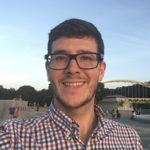
Eduard Fosch-Villaronga
Country of origin: Spain
Host institution: Leiden University
Hosting group: eLaw Center for Law and Digital Technologies
Project:
Legal and Regulatory Aspects of Healthcare Robot and Artificial Intelligence Technologies
Starting date: 1 January 2019
Abstract:
Robot and artificial intelligence technologies are increasingly used in healthcare settings. These include robots for cognitive therapies (e.g. for autism, traumatic brain injury), physical rehabilitation robots (upper-/lower-limb exoskeletons for stroke patient rehabilitation or spinal cord injury), assistive robots that provide companionship and care to elderly, disabled or children, and surgery robots. As we can imagine, these technologies raise different types of issues and challenges, including privacy concerns, autonomy suppression, replacement of humans, or uncertainty in relation to responsibility allocation.
European legal framework is currently ill-prepared to address such concerns because they typically focus on industrial robots, and do not include safeguards for robots interacting with the general population, especially if users have some particular health condition. In this project we will ensure that safeguards are devised and put in place in order to make healthcare robots safe to the whole extent of the meaning of the word.
I will start this project in January 2019, and for two years my base will be at the eLaw Center for Law and Digital Technologies at the School of Law of Leiden University. During this time I will visit the Robotics Institute and the Values, Technology and Innovation Group of TU Delft; and I will have an internship at the Foundation for Responsible Robotics.

Elena Sánchez López
Country of origin: Spain
Host institution: Leiden University Medical Center
Hosting group: Human Genetics Department
Project:
Unravelling the progression of Polycystic Kidney Disease by a comprehensive metabolic mapping.
Starting date: 1 November 2018
Abstract:
Polycystic Kidney Disease (PKD) is a complex clinical entity which unifies a group of diseases that result in renal cyst development. Particularly, autosomal dominant polycystic kidney disease (ADPKD) is a genetic disease characterized by progressive renal cyst formation and fibrosis, which affects 1 in 2500 individuals worldwide who, in most cases, need renal replacement therapy at the age of 55-65. Despite the efforts focused on developing therapies, the current licensed treatment for ADPKD produces side effects, therefore, it is needed to look for alternatives.
I hypothesize that metabolic remodeling plays an important role in cyst development, thus, the major objective of my project is to investigate in detail the affected metabolic pathways of ADPKD. On this sense, metabolomics, understood as a tool to obtain massive information regarding metabolic profiles, will help me to unravel the mechanisms underlying cyst formation and ADPKD progression. By understanding these metabolic mechanisms, I will be able to find potential therapeutic targets.
In this project, I will apply metabolomics analyses in a multidisciplinary setup combining in vivo (a sophisticated mouse model of ADPKD) and in vitro (unique 3D cyst culture models) experiments, together with the integration of transcriptomics data, and an ADPKD patient cohort. With all the above I will obtain a unique data source for the in-depth analysis of the metabolic control in ADPKD. This data source will be used to answer the following fundamental questions: 1) Can we identify active (sub)networks critical for the initiation of cyst formation or (sub)networks characteristic for disease progression? And 2) Can we modulate the activity of these networks?
I will carry out this project in the Department of Human Genetics of the LUMC under supervision of Prof. Dr. Dorien J. M. Peters and in collaboration with the Center for Proteomics and Metabolomics, at the LUMC. My project also includes a secondment at the spin-off biotech company OcellO B.V. from the Leiden University where I will work with a unique 3D cell culture model of cyst formation.
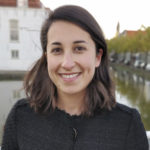
Elisa Ragno
Country of origin: Italy
Host institution: Delft University of Technology
Hosting group: Faculty of Civil Engineering and Geosciences (CiTG) – Water Resources Section
Project:
A Generalized Framework for Quantifying Coastal Flood Risk in Areas with Multiple Flood Drivers
Starting date: 1 September 2018
Abstract:
Traditionally, the risk of a flood event has been quantitatively defined based on the probability of occurrence of one single physical driver, e.g., river discharge, or storm surge. However, the single-driver assumption can lead to substantial underestimation of the risk of flooding in coastal areas prone to multi-driver extreme events (also known as compound events). Hence, the proposed study aims to better characterize and predict the risk of compound flooding by further investigating the interplay between flood drivers, i.e., river discharge and storm surge, and the reliability of man-made infrastructures to cope with extreme events.
The theoretical framework developed will be used to generate coastal flood risk maps at regional scale. Insights for mitigation and adaptation strategies can be derived from the interaction between the hazard (i.e., compound flood) and the vulnerability (i.e., flood protection systems) and exposure (i.e., people and environment at risk) of the flood-prone area.
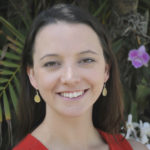
Elizabeth Loehrer
Country of origin: United States of America
Host institution: Erasmus Medical Center
Hosting group: Department of Epidemiology
Project:
Population-based stem cell induction for complex diseases and large-scale experimentation (POPSICLE)
Starting date: 1 May 2019
Abstract:
In the Netherlands, over 90% of the burden of disease in the population is from noncommunicable diseases. Complex genetic and environmental factors contribute to the development of many of these diseases. To develop effective prevention and treatment interventions, we need to be able to study the physiological mechanisms that link these genetic associations with the disease phenotypes.
Induced pluripotent stem cells (iPSCs), derived from easily accessible tissues like skin or blood, have been lauded as a critical tool to model how genetic variants affect cell function in the development and progression of disease. Due to feasibility limitations, most iPSC models to date have been applied in small scale, case-control studies of genetic variants with known large effect sizes. Yet, most genetic variants associated with noncommunicable diseases have small to moderate effects, and to study the functional changes associated with these variants, we need large sample sizes. New culturing techniques now make it technically possible to scale iPSC production to larger studies. However, before iPSC models can be used in a large-scale setting, valid and precise methods need to be established to ensure we can distinguish subtle causal effects over any variation induced from the process of deriving the models.
The overall aim of this project is the development of a robust and reliable framework for iPSC models for population-based studies.
Specifically, we aim to determine the optional iPSC differentiation protocol for population-based settings, and compare quality and consistency of output of iPSCs derived from various collection and storage procedures. This project will be among the first to investigate established iPSC methods in a longitudinal setting, with the potential to study the bounds of established iPSC models in this setting and to expand these iPSCs into experimental studies of disease etiology that have not been feasible up to this point.
During my LEaDing Fellows research project, I aim to complement and expand my doctoral training in molecular epidemiology, and I am excited to have the opportunity to work directly with research clinicians, epidemiologists, cell biologists, and biomedical engineers within the LED network and abroad. Furthermore, the technological limits and potential applications of this research bring the opportunity to foster innovation and sustainable cross-disciplinary relationships between academia and biotechnology both within the Netherlands and across international borders.
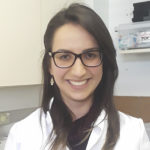
Fabiany da Costa Gonçalves
Country of origin: Brazil
Host institution: Erasmus Medical Center
Hosting group: Internal Medicine
Project:
Mesenchymal stromal cell-derived membrane particles as a new therapeutic strategy for inflammatory diseases
Starting date: 1 November 2018
Abstract:
For many degenerative, inflammatory and autoimmune diseases there is no effective treatment available. Mesenchymal stromal cells (MSC) are a promising therapy for these diseases due to their multipotent differentiation capacity, secretion of trophic factors, and immunomodulatory properties. Multiple clinical trials in a variety of diseases have been performed in recent years and for some indications the development of effective MSC-based therapy is coming close. However, MSC therapy comes with practical difficulties associated with the use of living cells. Culture expanded MSC are large and get trapped in the capillary networks of the lungs after intravenous infusion, where they have a short survival time. To steer cellular immunoregulatory therapy beyond the lungs, we propose to reduce the size of the therapeutic units.
We aim to develop cell-free immune therapy based on the generation of small particles from the membranes of MSC. These particles contain the membrane bound proteins of MSC, several of which have an immunomodulatory function.
This study will be performed in the Department of Internal Medicine, at the Erasmus MC under the supervision of Dr. Martin Hoogduijn, and will be in collaboration with the Department of Radiology/Nuclear Medicine at the Erasmus MC and Department of Nephrology at LUMC, as well as other academic and industrial partners.
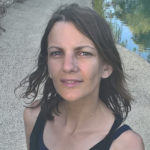
Federica Giardina
Country of origin: Italy
Host institution: Erasmus Medical Center
Hosting group: Department of Public Health
Project:
Towards elimination of schistosomiasis: mathematical models and statistical methods to explore novel control interventions
Starting date: 31 January 2019
Abstract:
Schistosomiasis is an infectious disease caused by parasitic flatworms of the genus Schistosoma living in fresh water, affecting around 200 million people worldwide. The World Health Organization goal for schistosomiasis is to control morbidity through Mass Drug Administration (MDA). In recent years interest has switched from morbidity control to elimination in low/moderate-endemicity settings. At the same time, more sensitive diagnostic tools, such as the tests based on the detection of schistosome circulating antigens, have become available and prevalence of infection around the world has been shown to be higher than previously thought. Even with intensive biannual MDA, prevalence of infection has been seen to rebound rapidly after each round and plateau over time. The reasons are still poorly understood.
In this project, I will investigate the causes of the rapid rebound of schistosomiasis by developing a stochastic Individual Based Model (IBM) that simulates the transmission of schistosomiasis in a population. IBMs are a powerful tool to investigate complex infectious diseases because they allow the inclusion of the different processes/agents and the multiple heterogeneities involved. In addition, the model will be used to propose optimal implementation of current strategies (e.g. MDA, Water, sanitation and hygiene or snail control) as well as innovative strategies (the introduction of new drugs and the use of pool testing) to move towards elimination.
The collaboration will be between the Department of Public Health at the Erasmus Medical Center (EMC) and the Department of Parasitology and the Department of Molecular Cell Biology at Leiden University Medical Center (LUMC), which pioneered the research on schistosome circulating antigens and the development of highly sensitive and specific immunodiagnostic assays, including field-applicable assays. I will do an internship at Merck Serono, the pharmaceutical company donating the drug since 2007 and currently working on the development of a suitable pediatric formulation.
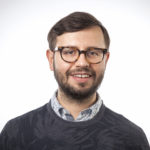
Guillermo Javier Amador
Country of origin: Venezuela
Host institution: Delft University of Technology
Hosting group: Process & Energy
Project:
How cells interface with their surroundings: Fluid-structure interactions of membranes and fibers
Starting date: 1 September 2018
Abstract:
Eukaryotic cells interact with their surroundings via membranes and their sub-structures. Since these cells are surrounded by and contain fluids, the mechanics involved during fluid-structure interactions are critical in their behavior. They determine the transport of ions and molecules, locomotion, and sensing. Overall, they mediate the cells’ homeostasis. In this project, I plan to investigate the fluid-structure interactions of membrane-bound unicellular organisms, specifically the surface tension and fluid slip of cellular membranes, and sensing and flow enhancement due to fibrillar structures during locomotion. The main tool that will be utilized in this study is optical tweezers. Microscopic particles will be optically trapped and used for measuring hydrodynamic forces with sub pico-Newton resolution.
The project will be carried out under the supervision of Dr. Daniel Tam (supervisor, Process & Energy, TU Delft) and Dr. Marie-Eve Aubin-Tam (co-supervisor, Bionanoscience, TU Delft). Within their labs, the high-precision force measuring capabilities of optical tweezers will be exploited in controlled laboratory experiments with free-standing membranes and tethered algal cells. Additionally, I will collaborate with Dr. Gert Jansen (Cell Biology, Erasmus MC) in order to understand the role of molecular signaling in sensing by motile cilia. Understanding how morphology and behavior are related mechanistically through fluid-structure interactions may reveal their contributions to evolutionary diversification.
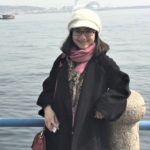
Haiqiu Wu
Country of origin: China
Host institution: Leiden University Medical Center
Hosting group: Department of Cell and Chemical Biology
Project:
PD-L1 destruction system based on PROTAC
Starting date: 1 August 2018
Abstract:
Programmed Death-Ligand 1 (PD-L1, also known as CD274) on the surface of cancer cells can lead to the impairment of T-cell survival and/or activity. Great clinical benefits for patients with diverse types of metastatic cancers have been observed upon PD-1/PD-L1 blockade with antibodies. However, the objective response rate with anti-PD-1/PD-L1 monotherapy was only ~20%, and immune-related toxicities and hyperprogression would occur in a small subset of patients during PD-1/PD-L1 blockade therapy. Therefore, new PD-L1 inhibition strategy is still urgently needed.
The inhibition of PD-L1 could be targeted to the PD-L1 expression at the transcriptional level and/or
the PD-L1 on the cell surface. An important founding was reported that PD-L1 was a direct target gene of bromodomain containing 4 (BRD4). BET bromodomain BRD4 inhibition by small molecules, such as JQ1, could block the IFNγ-induced upregulation of PD-L1 and reduce PD-L1 expression at the transcriptional level in a dose- and time-dependent manner. Another big advance came very recently, when CMTM6/ CMTM4 were identified as a critical regulator of PD-L1 in a broad range of cancer cells, influencing PD-L1 protein fate after egress from the endoplasmic reticulum by reducing its ubiquitination and increasing PD-L1 protein half-life.
According to the facts above, it is thus very attractive to destruct PD-L1 both at mRNA level and cell surface level. This project aims to develop a new strategy for PD-L1 inhibition based on PROTACs, the most advanced means of targeted protein degradation in a catalytic manner. On one hand, by introducing PROTAC targeting BRD4 degradation, PD-L1 expression could be reduced at transcriptional level. On the other hand, the inhibition of CMTM6 would reduce PD-L1 cell-surface levels. Unlike antibodies, this inhibition strategy with PROTACs could not only completely destruct PD-L1 but also in a non-stoichiometric manner.

Hélène Gleitz
Country of origin: France
Host institution: Erasmus Medical Center
Hosting group: Department of Hematology
Project:
The role of abnormal protein translation in del(5q) myelodysplastic syndrome
Starting date: 1 October 2018
Abstract:
Myelodysplastic syndrome (MDS) is a heterogeneous disease of abnormal blood production that often leads to leukemia. It is estimated that 20% of cases of anemia in elderly populations in Europe could be explained by MDS, leading to a significant burden to European healthcare systems. Del(5q) syndrome is a subtype of MDS and is caused by large deletions in the long arm of chromosome 5, leading to severe anemia. The immunomodulatory drug lenalidomide is the treatment of choice for del(5q) MDS patients, achieving transfusion independence in two-thirds of treated patients. However, 50% of treated patients become resistant after 3 years of treatment. Thus, alternative treatments are urgently needed.
My hosting laboratory (Schneider group) has discovered a novel mechanism by which the blood forming cells in MDS (hematopoietic stem cell) are blocked in the production of red blood cells (erythroid differentiation), thereby leading to the severe anemia. They have discovered a direct link between defects in the protein synthesis in del(5q) MDS (translation defects) and increased inflammation in the bone marrow through upregulation of the so-called alarmins S100A8/S100A9. The open question remains which proteins are less translated and how they contribute to increased inflammation and subsequently, to severe anemia.
Our overall goal for this project is to elucidate the mechanism by which defects in protein translation contribute to severe anemia in MDS and other bone marrow failures associated with ribosomal defects. I will identify which proteins are differentially translated in del(5q) MDS by performing polysome profiling and ribosomal footprinting on isolated murine erythroblasts, in close collaboration with Dr. ‘t Hoen (LUMC) and Dr. MacInnes (AMC). We will subsequently be able to assess the mechanistic link between less translated proteins, blood-formation defects and inflammation, using CRISPR/Cas9 genome editing. Lastly, we aim to validate our findings into human biology by assessing bone marrow biopsies and primary cells from patients with del(5q) MDS and other ribosomopathies.

Indu Khatri
Country of origin: India
Host institution: Leiden University Medical Center
Hosting group: Dept. of Immunohematology and Blood Transfusion (IHB)
Project:
A computational model to assess vaccine efficacy based on the analysis of B-cell clonal lineages
Starting date: 1 August 2018
Abstract:
Vaccines train the immune system to recognize pathogens in a controlled setting. The B-cells of the immune system are pivotal to raise the vaccine-based immune response against pathogens. I hypothesize that the analysis of the expansion of clonally related B-cell lineages in response to vaccines or infections in humans can be used to assess vaccine efficacy. I will use pertussis as a disease model to develop new computational tools for studying immune response. Other virus vaccine studies1,2 will be used to modulate and generalize the model to assess vaccine efficacy. This model may further assist in designing more effective intervention strategies (vaccines, treatments, diagnostics).
This study will also help to better understand the re-emergence of pertussis. Pertussis, or whooping cough, is caused by infection of Bordetella pertussis. B. pertussis infections were well controlled by vaccination strategies in the past. Unfortunately, in the previous 10-15 years, pertussis has resurged in several industrialized countries, affecting mainly vaccinated young children and elderly3. Understanding the differences in responses to different pertussis vaccines is pivotal to our overall understanding of the resurgence. To increase this understanding, I propose to dissect the antibody immune response to pertussis vaccination and the pathogen itself. The project will generate critical knowledge to assess vaccines and hence their development to be used in prevention programs for infectious disease threats.
My project is an inter-disciplinary project in the fields of immunology and computational biology. I will be using B-cell receptor (BCR) sequencing data from ongoing studies performed by the Immune-Monitoring group at Leiden University Medical Center (LUMC) to develop a computational model to assess vaccine efficacy. Additionally, I will be working with both the Computational Biology group at LUMC and the Bioinformatics group of the Delft University of Technology to extend my knowledge and network on bioinformatics aspects.
The secondment at the National Institute for Public Health and Environment is a unique opportunity for me, since I will be in close contact with the public healthcare authorities that will guide me in implementing my model within the ongoing vaccine program. I am also looking forward to attain soft skills to further develop my academic career towards an independent position and will also attend workshops and conferences to expand my network. ‘Computational Immunology’ or the ‘reconstruction and assessment of the B/T-cell repertoire’ has many applications outside the vaccination field, including cancer and inflammatory diseases. I aim to extend the developed strategies to other fields as well.

Lauryna Siaudinyte
Country of origin: Lithuania
Host institution: Delft University of Technology
Hosting group: Imaging Physics Department, Optics Research Group.
Project:
Coherent Fourier scatterometry for reconstruction of subwavelength features of printed nanostructures
Starting date: 15 September 2018
Abstract:
In the semiconductor industry, the quality control of lithographic machines is achieved by analyzing subwavelength features on printed test structures. Currently, in the semiconductor industry incoherent Fourier scatterometry based optical techniques are used, where a spatially incoherent extended light source and Kohler illumination are used to focus the light to test periodic samples such as diffraction gratings. The reflected intensity in the pupil plane of the lens, i.e., the spatial spectrum, is measured and compared to vectorial rigorous simulations from which the grating parameters are determined. However, this method cannot offer highest sensitivity, required to determine grating parameters. Therefore, the main focus of proposed research is Coherent Fourier Scatterometry (CFS) which involves a coherent source focused on the sample. The focused spot can be expanded in mutually coherent plane waves which are incident on the grating.
By using two polarizers, one in the incident beam and the other in the reflected beam (after collimation by the lens), all combinations of incident and reflected polarizations can be obtained. If the pitch and the numerical aperture of the objective are such that higher reflected orders are captured by the lens, then some of the reflected orders overlap and interference between the orders take place and can be detected in the far field. Since this feature is lacking in incoherent Fourier scatterometry, the sensitivity towards grating shape parameters is considerably higher in CFS.
The goal of this research is to use other degrees of freedom of the light beam in order to enhance certain key features from the nanostructure in the far field. Detection and separation of useful information obtained in the far field is the main task of this project. Also, analysis and implementation of new schemes of CFS where extra information at the far field is obtained by creating new light beams and making selective detection at the far field will be performed.
Since printed structures become smaller and smaller, it becomes difficult to retrieve certain parameters with high accuracy. One way to improve present systems is to use, in addition to amplitude and phase, other degrees of freedom of the light beam such as unconventional polarization states, spectral information, angular momentum. Exploring new degrees of freedom will help to enhance the features in the far field related to a certain parameter to be retrieved from the object. In this project, the analysis of this particular approach will be performed
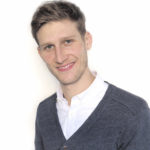
Martin Sand
Country of origin: Germany
Host institution: Delft University of Technology
Hosting group: Department of Values, Technology and Innovation
Project:
Moral Luck in Science and Innovation
Starting date: 1 August 2018
Abstract:
Luck plays a crucial role in science and innovation, which challenges our understanding of individual responsibility in those fields and the ambition to govern them. Alexander Fleming, for example, did not intend to discover antibiotics when doing research on fungi.
The discovery of this important medicine was undoubtedly the result of lucky circumstances. Since the long-term effects of emerging technologies such as robotics, autonomous driving, or big data can hardly be anticipated, it is partially a matter of luck whether these technologies will contribute to societal values such as justice, privacy, inclusiveness, and sustainability.
In this way, luck possibly undermines the ambition to govern science and innovation processes responsibly and current practices of attributing responsibility in those fields. While this problem receives increasing attention in the topical debate about Responsible
Research and Innovation (RRI), a satisfactory and systematic approach to moral luck in science and innovation has not yet been developed. This project will fill this gap by advancing our understanding of luck’s role in science and innovation and developing an original approach to deal with its philosophical implications.
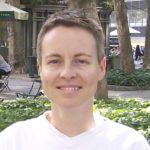
Maryse Helbert
Country of origin: France
Host institution: Erasmus University Rotterdam
Hosting group: International Institute of Social Studies, Political Ecology
Project:
Neo-extractivism as a path to inclusive prosperity and sustainable development? the gendered dimensions of lithium extraction in Chile
Starting date: 15 January 2019
Abstract:
One of the central concerns in mitigating climate change – on a global, state, regional and local level – is curbing carbon emissions while securing inclusive prosperity, sustainable development and environmental justice. The development of lithium-ion batteries, with their ability to store energy from renewable sources, has been viewed as a leap forward on the path to a low-carbon economy, but the mining of lithium continues to pose major challenges in terms of equity and sustainability of outcomes for affected communities.
Chile has tried to meet these challenges by implementing a post-neoliberal approach to lithium mining, called ‘neo-extractivism’ (Gudynas 2009), emphasising the role of the state as agent for redistribution of the economic benefits of extraction. Political ecologists, however, have raised concerns about the ability of a neo-extractive approach to resist the socially and environmentally destructive ‘habits’ of fossil fuel extraction. Their analyses focus largely on the uneven distribution of access to, and control over, resources on the basis of class and ethnicity (Peet and Watts 2004). What’s missing in these debates is the gendered dimension of neo-extractivism.
The proposed research will fill the gender gap in current analyses of neo-extractivism, adopting a feminist political ecology analysis that ‘treats gender as a critical variable in shaping resource access and control’ (Rocheleau, Thomas-Slayter, and Wangari 1996, 4). It will draw on experiences of the Salar de Atamaca lithium extractive zones in Chile to illustrate the gender dynamics of neo-extractivism, and how different development approaches can either ameliorate or further entrench existing gendered inequalities.
The research will involve (1) a study of the differential gendered impacts on local communities – in real terms – between neo-extractivist and neoliberal approaches to resource extraction; (2) a feminist political ecology-based analysis seeking to understand and explain these impacts; and (3) policy and practice recommendations to address and reduce these negative impacts, along with a discussion of possible alterative models for a more sustainable and inclusive approach to lithium extraction. The intended outcome of the proposed research is to advance academic debates – and international development policy and practice – on pathways to inclusive prosperity, environmental and social justice in the transition to a low-carbon economy.
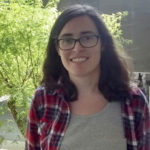
Mónica López-Vicente
Country of origin: Spain
Host institution: Erasmus Medical Center
Hosting group: Department of Child and Adolescent Psychiatry
Project:
Unravelling the temporal characteristics of brain and behavior: Longitudinal development of brain connectivity and psychiatric problems in children
Starting date: 28 January 2019
Abstract:
The first signs of psychiatric illness appear during childhood and adolescence. Understanding the neurobiological mechanisms that underlie psychiatric disorders is key to prevent the chronicity of the symptoms in the adulthood. My project aims to identify alterations in the development of specific brain networks involved in this chronicity process through functional magnetic resonance imaging techniques.
I will analyze repeated measures of psychiatric problems and brain function of two different population-based youth cohorts, Generation R from Rotterdam, and Brain Time from Leiden, to test the bidirectional associations between psychiatric problems and the connection of resting-state brain networks. I will apply novel methods to capture, not only the connection between synchronized brain areas that are part of the same networks, but also the interconnection between many brain networks.
The output of this project could be translated to new therapeutic strategies focused on specific brain networks, more efficient in slowing down the progression of the disorder and reducing the negative impact of it on the brain.

Nicolás Robinson-García
Country of origin: Spain
Host institution: Delft University of Technology
Hosting group: Delft Institute of Applied Mathematics (DIAM)
Project:
Unveiling the Ecosystem of Science: A Contextual Perspective on the Many Roles of Scientists
Starting date: 15 January 2019
Abstract:
Research is a team effort. Scholars distribute roles based on the different research activities they perform. These roles shape the academic profile that will define them during their career trajectory. These roles will also change as they acquire experience and seniority. Some scientists coordinate, design and lead research agendas; others develop and produce new tools and software for data collection and processing; others develop conceptual and theoretical frameworks; others engage with non-academic stakeholders and bridge with societal demands.
However, most research evaluation schemes consider career paths as homogeneous, promoting ‘scientific excellence’ and ‘academic leadership’ as the main and desired profile researchers should aim at, without considering the underlying diversity of roles and activities. To unveil this diversity of academic profiles and career options scientists have, we aim to provide novel insights into different professional paths and skills necessary in scientific research. This is an essential step towards developing more nuanced and advanced research evaluation approaches, maximizing researchers’ strengths and acknowledging the heterogeneity needed in the scientific workforce to promote a healthy and sustainable research system, compared to the monotonous situation that currently exists.

Nicolette Ognjanovski
Country of origin: United States of America
Host institution: Leiden University Medical Center
Hosting group: Department of Cell and Chemical Biology, Neurophysiology
Project:
Illuminating the mechanisms of the aging circadian clock and its effect on brain networks
Starting date: 1 January 2019
Abstract:
The increase in mean age in industrialized societies has drastic consequences for health and economy. Aging leads to functional deterioration of many brain systems, including the circadian clock. This internal time-keeping system generates the 24 hour rhythms that dictate our life, affecting not only our behaviour but numerous unseen physiological processes. There is direct correlation between impaired circadian rhythms and deficits associated with neurodegenerative disorders and sleep disturbances, both increasingly common in aged adults. Of the many changes occurring in our body during aging, alterations in brain function are the least accessible to classical interventions. One can apply a topical cream to ameliorate the effects of visibly aging skin; however, it is more difficult to intervene with the internal changes to brain function resulting from aging. Therefore, identification of the parts of the biological clockwork affected by aging is prerequisite for development of intervention strategies. The aim of my project is to use a mouse model to evaluate the importance of environmental light on aging brain circuits.
Recent work has demonstrated that the neuronal network of the suprachiasmatic nucleus (SCN), representing the central circadian clock in the hypothalamus, is altered in aging. The SCN shows desynchronized neuronal activity which was correlated to fragmented sleep-wake patterns in old mice. One of the pronounced characteristics of aged mice, and a likely culprit for this desynchrony, is a decrease in the amount of inhibitory neuronal activity. This results in a change in the balance between excitation and inhibition (E/I balance), which is an important determining factor in the function of neuronal networks in the brain. Based on recent findings that light regimes can influence the balance between excitatory and inhibitory neuronal activity, I will investigate how this affects neuronal network function. I will use light as a tool to manipulate E/I balance in the old brain and evaluate the use of light regimes to rectify ageing induced deficiency in brain function.
The main objective of my research is determine the link between E/I balance and synchrony and to show the influence of light on this in the SCN as well as other brain areas. My experiments will use a mouse model and aim to answer two questions: 1) What is the link between light induced changes in E/I balance and network status (synchrony) in the aging SCN, as well as in other brain areas (cortex, hippocampus) and 2) Predict interactions of cell networks using network rhythm data.
My work will combine techniques from different fields- integrating my previous practical and theoretical work on neuronal networks- with circadian modulation of function in aging. For the translational aspect of the project, I will also work closely with the Lorentz Institute for Theoretical Physics at Leiden University. In this collaboration I will learn the unique methods developed in Dr. Garlaschelli’s group to perform mathematical analysis of the time series data to identify network communities. As a result of my proposed experiments dealing with aging, I will seek advice on dissemination of results from the gerontology community from Dr. D. van Heemst (LUMC). Through this work I aim to understand both the potential positive- but also negative- influence of environmental light on brain function in the elderly in order to develop intervention strategies applicable to the aging population.
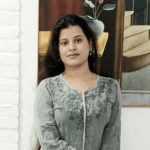
Richa Tiwari
Country of origin: India
Host institution: Leiden University Medical Center
Hosting group: Cell and Chemical Biology
Project:
Elucidating cross-regulation of Histone SUMOylation and acetylation in a cell cycle dependent manner and its association with cancer.
Starting date: 1 September 2018
Abstract:
Conjugation of SUMO to protein substrates in a dynamic and reversible manner is an efficient system to regulate their functional properties. SUMOylation influences numerous aspects of cellular machineries, including transcription, DNA damage repair, cell-cycle progression, apoptosis and thereby cellular homeostasis. Deregulation of the SUMO machinery may lead to cancer. Histones whose functions are orchestrated by coordinated patterns of various Post-Translational Modifications (PTMs) have been unearthed as substrates of SUMOylation. Aberration of histone PTMs leads to abnormal gene expression and uncontrolled cell proliferation, potentially leading to the development of cancer.
Nevertheless, implication of SUMOylation and its synchronized regulation with other PTMs on histones during cell cycle and cancer progression are still unexplored. There are few reports suggesting that histone SUMOylation leads to transcriptional repression and antagonizes the positive regulators specifically acetylation, however the biological relevance of the same is largely unknown.
By studying the SUMOylation of important target histones both biochemically and cell-biologically, the current research aims to address the functional relevance of these modifications. This proposal will realign research efforts – both basic and applied – towards histone SUMOylation as a potential new biomarker and therapeutic target in cancer. In summary, the findings of the study about the new interplay between histone SUMOylation and acetylation will address unanswered questions and instigate investigation into the cause of various cancers.
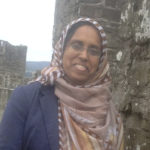
Shams Tania Afroza Islam
Country of origin: Bangladesh
Host institution: Delft University of Technology
Hosting group: Department of Biotechnology
Project:
High-throughput infrared thermographic enzyme screening for the discovery of novel biocatalysts for lignin conversion
Starting date: 16 January 2019
Abstract:
Research into use of lignin, an annually renewable source second to cellulose, has gained considerable momentum due to various economic and environmental issues. Lignin is low cost, readily available, biodegradable, of negligible toxicity and contains relatively high number of functional groups that may undergo chemical modification to various products.
However, its use is limited due mainly to its inconsistent composition/ structure depending on its source and handling. This limitation can be overcome by investing into fundamental research on enzymes which are naturally able to convert lignin in a specific manner and under mild conditions. The native enzyme can be mutated but then the huge number of enzyme variants will need to be ‘screened’ for those with enhanced reactivities-the best being the one with the highest activity. Recently, calorimetry, a method where the heat change (temperature change) is recorded, has been utilized as a measure of the rate of enzymatic catalysis.
However, signals from the instruments are intrinsically slow and cannot be easily implemented in existing high-throughput screening workflows. Thus, a method is required which has extremely low response time instrumentally, adaptable to high-throughput systems and suitable for measuring any enzyme/substrate combination. With the help of the LEaDing Fellowship, a study is thus being undertaken focusing on the development of thermographic imaging for high-throughput screening process.
Analysis will place emphasis on lignin valorization and discovery of new biocatalysts from the variants obtained by mutagenesis
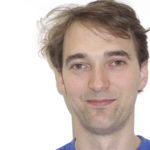
Simon Jochems
Country of origin: The Netherlands
Host institution: Leiden University Medical Center
Hosting group: Department of Parasitology
Project:
Applying systems biology to identify protective immunity against controlled human malaria infection
Starting date: 21 January 2019
Abstract:
Malaria is a major global health problem, for which novel vaccines are urgently needed. The development of these could be accelerated by the identification of correlates of protection. The field of systems immunology is a rapidly evolving field that takes a holistic approach to discover previously unknown relationships and key molecules in the immune system. During this Fellowship, I will learn and apply state-of-the-art computational techniques to unique samples collected during controlled human malaria infection (CHMI) in the lab of Prof Maria Yazdanbakhsh.
Five malaria-naive European volunteers and twenty African volunteers with lifelong malaria exposure were previously safely infected in a controlled manner with Plasmodium falciparum sporozoites and monitored for development of parasitaemia and symptoms. All Europeans developed parasitaemia quickly (highly susceptible), 12 out of 20 Africans developed parasitaemia at later timepoints (susceptible) and 8 out of 20 Africans were resistant to parasitaemia. This provides us with unique samples to ask the question “what determines naturally immunity to malaria infection?”. Serial blood samples were collected before and after infection for all volunteers and have been used for immunophenotyping of blood cells by mass cytometry, whole blood transcriptomics by RNA-sequencing and serum metabolomics by nuclear magnetic resonance and liquid chromatography–mass spectrometry.
Here, I will make use of the expertise in the bio-informatics group of Prof Marcel Reinders at TU Delft to integrate these high-dimensional datasets and associate response networks with susceptibility to malaria. This novel approach allows to understand the pathways that characterize immunity to malaria and to identify novel markers that associate with protection.
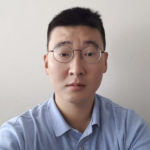
Taehoon Kim
Country of origin: Republic of Korea
Host institution: Delft University of Technology
Hosting group: Department of Microelectronics, Electronic Instrumentation Laboratory
Project:
Smart Integrated Circuits for Ultrafast Ultrasound Imaging of the Carotid Artery
Starting date: 1 August 2018
Abstract:
Carotid artery disease is caused by a build-up of plaques in arteries that deliver blood to the brain. This is called atherosclerosis. Carotid artery disease develops slowly. However, sudden stroke deprives the brain of oxygen. Within minutes, brain cells begin to die. It is the most common cause of death and the leading cause of permanent disability. An accurate assessment can be provided by measuring blood flow, plaque deformation and pulse-wave velocity using ultrasound but requires high-frame-rate 3D images. Current solutions are limited to 2D imaging, while 3D imaging requires a probe with a matrix of 1000’s of transducer elements, far more than current imaging systems can handle.
To realize an ultrafast three-dimensional (3D) ultrasound probe, my LEaDing fellowship project will focus on the development of novel application-specific integrated circuits (ASICs) built into the ultrasound probe interfacing the transducer elements to an imaging system using a much smaller number of channels. Also, The ASICs will be designed with an all-digital I/O interface to be compatible with a standard computer instead of an expensive imaging system. I will build on my expertise in ultrasound system modeling, which was the topic of my Ph.D., and my prior experience related to beamforming analog-to-digital converter (ADC) technique in ultrasound ASIC design.
This research will be performed at Prof. Michiel Pertijs’ group at the Delft University of Technology which has already achieved a lot of projects related to ultrasound imaging devices. Also, this work will be in collaboration with Dr. Martin Verweij, Prof. Nico de Jong (Laboratory of AWI) in Deft, and Dr. Hans Bosch, Dr. Pieter Kruizinga (Thoraxcentre, Erasmus MC) in Rotterdam.
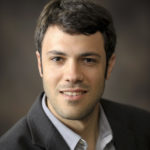
Tomás Manzaneque García
Country of origin: Spain
Host institution: Delft University of Technology
Hosting group: Department of Precision and Microsystems Engineering
Project:
Cell mass sensing using hollow cantilever arrays with electrical readout
Starting date: 1 August 2018
Abstract:
Hollow cantilevers have emerged as a promising alternative for high-resolution sensing of biological particles, with the potential of weighting single cells and biomolecules. Different from resonant biosensors working immersed in liquid media, the liquid under test passes through a channel implemented inside the cantilever.
The main advantage is the fact that the resonant structure can interact with the particle without suffering the high damping characteristic of resonators working under immersion. The high quality factor resulting from operation in air or vacuum results in a higher ultimate resolution of the system. In the demonstrations reported so far, the vibrations of the cantilever are sensed through optical interferometry.
This implies bulky instrumentation that is incompatible with compact systems required in point of care (POC) applications. To solve this issue, a new approach is proposed in which a piezoelectric transducer is integrated in the hollow cantilever for both actuation and sensing of the vibrations. This will allow to interface the cantilever with a simple driving circuit.
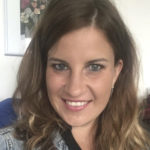
Urša Tiringer
Country of origin: Slovenia
Host institution: Delft University of Technology
Hosting group: Faculty 3mE, Department of Materials Science and Engineering
Project:
Hybrid sol-gel coatings as a replacement for chromate conversion coatings for corrosion protection of aluminium alloys
Starting date: 1 October 2018
Abstract:
Chromate conversion coatings (CCCs) have served as effective corrosion protection of aluminium alloys, for more than 100 years. Their effectiveness is based on their unique chemistry which enables CCCs to act as barrier and active corrosion protection of aluminium alloys. CCCs also improve the adhesion of primers and top coatings. However, they are toxic and their use in the European Union was restricted by the Restriction of Hazardous Substances (RoHS) Directive 2002/95/EC, in 2006. From September 2017 the use of CCCs is been allowed only in special industries, such as defense and space industries. Many surface treatments have been proposed to replace CCCs.
Sol-gel processes are amongst the most promising and environmentally friendly replacements for CCCs.
In our previous work we studied the self-healing effect of hybrid sol-gel coatings based on GPTMS, TEOS, SiO2 nanoparticles and Ce(NO3)3 as corrosion inhibitor, applied on aluminium alloy 7075-T6. We found out that the incorporation of cerium into hybrid sol-gel coating causes an active corrosion protection and provides self-healing property of coating.
Moreover, another class of promising corrosion inhibitors for aluminium alloys are lithium based salts.
Thus, our 1st goal is to incorporate different cerium and lithium salts into the hybrid sol-gel coating applied to aluminium alloys, and to study their anti-corrosion performance.
Our 2nd goal is to incorporate mixture of different cerium / lithium salts into the hybrid sol-gel coating and to optimize their ratio in attempt to obtain the synergistic effect and to improve anti-corrosion performance compared to the addition of single salts.
Our 3rd goal is to study the effect of different chemical pre-treatments of aluminium alloys on the deposition and anti-corrosion performance of hybrid sol-gel coatings.
Our 4th goal is to test the adhesion between hybrid sol-gel coatings and organic paint, as well as the resistance of such coating system against filiform corrosion.
Mentioned goals could be achieved by well-targeted training goals. New research techniques which will improve my research skills are the following: Atomic Force Microscopy (AFM), Scanning Kelvin Probe (SKP), Scanning Electrochemical Microscopy (SECM), Scanning Vibrating Electrode Technique. The main learning objective based on the new methods is the study of local corrosion processes of coated surfaces, including active corrosion protection and self-healing. The evidence of learning will be obtained by the publication of results obtained by these methods, autonomy at measurements and autonomy in interpreting the results.
One of the training goals is also the exposure synthesized coatings to the industry, thus the learning objective is to totally replace CCCs with effective, cost-efficient, non-toxic and ecol-friendly alternatives, leading to new collaborations with industries.
Our last goal is to continue the correlation with my host supervisor, what will be evidenced by our further publications and by applications of joint project, such as bilateral projects.
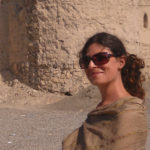
Valentina Azzarà
Country of origin: Italy
Host institution: Leiden University
Hosting group: Faculty of Archaeology, Department of World Archaeology
Project:
Building Complexity: Building Techniques and Craft Specialisation in Early Bronze Age Eastern Arabia
Starting date: 1 November 2018
Abstract:
My project, “Building Complexity”, seeks to understand how past populations built social, cultural and economic complexity through building technologies, and how we can have access to this process by studying such technologies.
Architecture, through both its agency and materiality, offers paramount information for grasping the dynamics that led to diversification and specialisation of labour, economic interdependence and social complexification. The analysis of “the material fabric” of buildings can draw attention to processing specificities and operational sequences, shed light on workers’ craftsmanship and on the organisation of labour, reveal the progression of building crafts in the long term, and help discriminate between the role of cultural factors and technical constraints in the production and construction processes. Conceiving the built environment – and architecture within it – as a key proxy for socio-economic complexity, this research ultimately intends to investigate the mechanisms through which economic specialisation shapes socio-cultural dynamics, and conversely, in non-urban societies, within communities where technological choices are not driven by elite sponsorship and control.
Specifically, the research delves into the characterisation of earthen building materials and techniques in Eastern Arabia throughout the Early Bronze Age (c. 3100-2000 BCE). I will tackle these aspects of architectural materiality through the mineralogical and petrographic characterisation of building materials, the test of mechanical properties on materials reproduced in a lab setting, the analysis of structural design, and the experimental reconstruction of archaeological structures. Modern comparative data on traditional technical know-how will be additionally collected in the field.
Hosted by Prof. Akkermans’s team at the World Archaeology Department of the UL Faculty of Archaeology, I will conduct these analyses in collaboration with the Departments of Archaeological Sciences and Archaeological Heritage Management, and during my secondment at the KU Leuven (Earth end Environmental Science; Engineering Technology). Thanks to this multi-disciplinary research cluster, with cutting-edge expertise and facilities, the LEaDing Fellowship will offer me the perfect working environment for this project, designed to cross boundaries between disciplines.
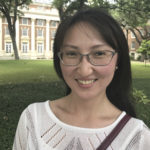
Zhanar Abil
Country of origin: Kazakhstan
Host institution: Delft University of Technology
Hosting group: Department of Bionanoscience
Project:
In Vitro Evolution of Proteins in a Minimal Cell Model
Starting date: 15 September 2018
Abstract:
How life originated is one of the biggest, most fascinating unanswered scientific questions to date. This question goes hand in hand with the question of nature of life itself, as well as the nature of its basic unit, the cell. With my colleagues in Christophe Danelon Lab at TU Delft, I am going to explore these questions by constructing and studying the behavior of liposomes, tiny lipid vesicles often used as a model of cellular life. Using liposomes that enclose solutions of DNA and all the necessary components for protein synthesis, we will emulate and study one of the essential properties of organisms – their ability to evolve. This investigation will give invaluable insight on the design principles of life and shed light on one of the possible mechanisms on the evolution of earliest life forms. In addition, this work can be used for the further advancement of nanomedical, drug delivery, and bioanalytical applications.
The Leading Fellows Postdoctoral Fellowship will offer exciting opportunities to learn. In particular, for this project and for my future career in engineering, it will be crucial for me to learn the analysis of big biological data and mathematical modeling. For this purpose, I will seek help from collaborations with professors Bertus Beaumont at the department of Bionanoscience TU Delft and Vera van Noort a professor in Computational Biology at Leiden University.
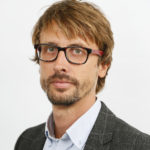
Zoltan Dujisin
Country of origin: Portugal, Hungary
Host institution: Erasmus University Rotterdam
Hosting group: Erasmus School of History, Culture and Communication, Department of History
Project:
Truth and Expertise in a Changing Europe
Starting date: 15 September 2018
Abstract:
Zoltan’s research explores how claims to truth are legitimated through expertise, and the consequences of these processes for identity construction. With this concern in mind, his research project “Truth and Expertise in a Changing Europe” unfolds in two timely and contentious topics: 1) Post-communist memory politics and 2) the new information cold war with Russia.
1) In his project Historiographic Expertise in Post-communist Politics Zoltan aims to reveal the deeper political and symbolic significance of the region’s converging memory politics, manifested in relatively successful calls for pan-European recognition of Nazi and Communist crimes as equal. Using field analysis, prosopography and in-depth interviews, he traces this phenomenon back to the rise of state-sponsored memory institutes, hybrid bodies that concentrate a substantial number of memory practices and maintain a difficult and complex relation with the region’s historiography. He concludes that memory institutes are intrinsic to the region’s identity politics and may presage the role of social-scientific expertise in a changing, post-liberal order.
2) In his project Russia Expertise in the Media Cold War Zoltan begins a long-term research agenda that attempts to tackle two timely issues: the decline of traditional media and discussions on post-truth as part of an increasingly visible collision between Russia and the liberal order. Using the rich case-study provided by European media coverage of Russia’s activities in the information sphere, and mobilizing content analysis, in-depth interviews and ethnography, this project examines the production of journalistic identities through their embedding in networks of Russia expertise, and its consequences for how truth and expertise are constructed in the public sphere.
Zoltan is a Portuguese, Hungarian and Chilean citizen and recently obtained his PhD in sociology from Columbia University in New York. Previously, he pursued part of his doctoral studies in Political Science departments at Sorbonne - Paris 1 and Central European University in Budapest. During the past 15 years he has also regularly worked as a journalist, corresponding for the global news agency IPS News and leading Portuguese weekly Expresso from Ukraine, Hungary and the Czech Republic.
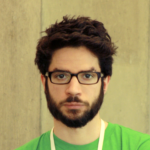
András Bárány
Country of origin: Hungary/Austria
Host institution: Leiden University
Hosting group: Leiden University Centre for Linguistics
Project:
A typological gap in ditransitive constructions as a window on syntactic theory
Starting date: 1 September 2019
Abstract:
Human languages show a large amount of variation, but they do not vary without limits. It is even possible to describe typological “gaps”: types of languages that we can imagine, that are logically possible, but that we do not find among the languages of the world. The absence of certain types of languages can teach us something about how human grammar works and can work as a testbed for theories of grammar.
The gap that I study in this project is found in ditransitive constructions, sentences with two objects, such as Mary gives the horse an apple, in languages in which the verb does not only agree with the subject (Mary) but also one of its objects: the recipient (the horse) or the theme (an apple). Languages vary in how the two objects are expressed in such constructions (cf. Mary gives an apple to the horse) and in which of the objects the verb can agree with, the recipient or the theme.
Combining agreement possibilities and construction types, we expect four possible types of ditransitive grammars, but only three of these are attested. In this project, I will study whether there really are no languages of this missing type, what the reason for their absence could be, and how this gap can be explained using current ideas about grammar.
The LUCL at Leiden is an excellent place to pursue this type of research because it houses a large number of experts on different areas of linguistics using different methodologies and theories to study linguistic variation and its limits, precisely what I will do as well.
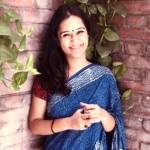
Arpita Bisht
Country of origin: India
Host institution: Erasmus University Rotterdam
Hosting group: Political Ecology, International Institute of Social Studies, Den Haag
Project:
Theorizing a post-extractivist future for India: Evidence from a meta-analysis of social resistance movements against environmental injustices at resource peripheries in India.
Starting date: 1 September 2019
Abstract:
Over the past century, worldwide resource extraction has expanded rapidly. This expansion of resources has been achieved through either intensification of existing extractive operations or through expansion of frontiers of extraction. These expanding frontiers– especially in non-industrialized economies – have repeatedly led to encroachments in physical spaces already inhabited by people. This has, directly and indirectly, impacted lives of local inhabitants, among others, through displacements, ecological damages, and deprivations of environmental inheritances. As a result, environmental and social justice movements, or ecological distribution conflicts (EDCs) in defense of land, ecosystems, and human rights are on the rise globally.
In this context, India is of special interest due to several reasons. Firstly, India accounts for the largest number of EDCs, as well as one of the largest numbers of deaths of environmental defenders, as per current available global databases on EDCs. Secondly, it is characterized by large inequities, and poverties which, given its population, impact large sections of global population. Thirdly, given its emissions and ecological footprint, India has a significant role to play in global climate change discourses and actions. Finally, it is a fast-growing economy, headed towards further economic growth, development, as well as ecological degradation and deprivations, unless urgent actions are taken to re-orient thinking about environmental and development policies. However, India is also characterized by unique, ecologically-protective cultural and religious practices which dictate the worldviews of people, a strong civil society, constitutional protections for marginalized peoples, and a well-functioning democracy. This places it in a position to alter the potentially destructive development pathways currently being pursued, and could have far ranging implications for other nations of the Global South, as well as the world.
This research project is interdisciplinary, and lies at the intersection of the fields of political ecology, ecological economics, cultural and social anthropology, human geography, human ecology, conflict studies, natural resource management, policy studies and post-growth economics.
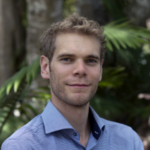
Bas Hensen
Country of origin: The Netherlands
Host institution: Delft University of Technology
Hosting group: Simon Groeblacher
Project:
Nonlinear Quantum Optomechanics – a spin-phonon-photon hybrid
Starting date: 1 October 2019
Abstract:
Quantum optomechanics is presently one of the most active and exciting areas of quantum science. Typically, an optical cavity mode is coupled through the radiation pressure force to a mechanical oscillator. Such systems have emerged as a leading candidate to investigate quantum physics at a massive, macroscopic scale.
Very recent experiments in Delft and elsewhere have demonstrated these systems can operate well in the quantum regime – showing non-classical correlations between the optical and mechanical degrees of freedom and entanglement between two mechanical resonators integrated on a chip. One limitation in such systems is the absence of a non-linear interaction: both optical and mechanical modes are typically described as quantum harmonic oscillators coupled by a linear interaction.
I propose to combine the exquisite quality factors obtained in nanofabricated optomechanical resonators with the long coherence times, manipulability and optical readout of a solid state electron spin. This will provide the non-linear interaction required for the preparation of a whole new class of non-classical states of the mechanical oscillator.
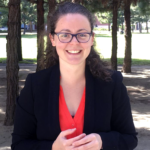
Chloé Najac
Country of origin: France
Host institution: Leiden University Medical Center
Hosting group: C.J. Gorter Center for High-Field MRI (Radiology Department, LUMC)
Project:
“Imaging the Pompe brain”: An advanced multimodal MRS/I investigation of brain involvement in Pompe patients treated with enzyme replacement therapy
Starting date: 1 December 2019
Abstract:
Classic infantile Pompe disease (IPD) is caused by abnormal glycogen accumulation in the lysosome of multiple tissues due to a deficit in glycogen degradation enzyme. Untreated, patients die before the age of one due to cardiac and respiratory failure. In 2006, translational research conducted at the Erasmus University Medical Center (EMC) led to the development of enzyme replacement therapy (ERT), the first clinically effective disease-specific treatment in any inherited neuromuscular disorder. Treatment by ERT dramatically improved patients’ survival. However, ERT treatment cannot cross the blood brain barrier and does not treat the CNS. As patients get older, a completely new phenotype appears, showing hampering of cognitive development. The pathophysiology, brain involvement in PD and the association with cognitive decline are currently unknown.
Magnetic resonance imaging (MRI) and spectroscopy (MRS) provides in vivo information on brain structure, function and biochemistry. Recent MRI data acquired at clinical field (1.5/3T) at the EMC, and other centers, point to progressive white matter abnormalities that were unseen at early stage of the disease.
This project aims at characterizing brain involvement in PD patients using advanced MR methods. MRI and MRS have the potential to provide a detailed characterization of the “visible” brain lesions, but also of the surrounding tissues, where “invisible” changes might occur at an earlier stage before becoming “visible”. Taking advantage of the ultrahigh field MR scanner (7T) available at the C.J. Gorter Center for High Field MRI (LUMC), the sensitivity/specificity of the detection are increased compared to clinical scanners (1.5/3T). Here, I will [1] characterize brain involvement in PD and relate this with patients’ cognitive decline and [2] identify biomarkers to monitor disease and treatment response.
The fellowship will be conducted at the C.J. Gorter Center (LUMC) with a secondment at the Center for Lysosomal and Metabolic Diseases (EMC).
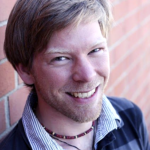
Christian Ungruhe
Country of origin: Germany
Host institution: Erasmus University Rotterdam
Hosting group: Global History, Erasmus School of History, Culture and Communication
Project:
Mobile Life Worlds. Trajectories of West African football migrants en route and in South-East Asia
Starting date: 1 November 2019
Abstract:
By focusing on West African footballers (aiming at) migrating to South-East Asia I will shed light on the processes of spatial, social and everyday mobilities in the making within the wider field of south-south migration. My project offers a novel approach of bringing to the fore the fluidities of migrants’ being and social becoming beyond the beaten track of south-north migration and beyond the exploration of rather static linkages between migrants’ home and destination contexts.
West African footballers in or en route to South-East Asia serve as a fruitful case to analyze since they embody the whole continuum from highly-skilled to precarious mobilities. My project is designed as a multi-sited and longitudinal study, covering the (almost) entire process of footballers’ sportive and migration careers from imagination and aspiration to being en route and at their destination. While the focus on a selected number of individual players will bring the subjective experiences of actual journeys and the negotiation of everyday, spatial and social mobilities to the fore, shared aspirations, trajectories and challenges among these highly-skilled yet vulnerable group of migrants will allow to identify commonalities and thus contribute to the bigger picture of sport and south-south migration. Hence, while it will identify particularities of forms of mobility taking place within the global South it will qualify the notion of Europe as migrants’ El Dorado.
During my fellowship I will closely work with members of the “Sport and Nation” research project led by Prof. Dr. Gijsbert Oonk and with colleagues at the Global History Research Cluster and the Centre for Historical Culture at Erasmus University Rotterdam.
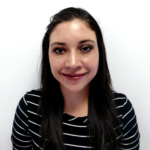
Clara Chavez Arana
Country of origin: Mexico
Host institution: Erasmus University Rotterdam
Hosting group: Department of Psychology, Education & Child Studies
Project:
Sensitive periods for differential susceptibility: Interactions between child personality and parenting in the development of social skills
Starting date: 2 September 2019
Abstract:
According to the differential susceptibility hypothesis (DSH), whether, how and how much parenting influences the development of social skills depends on the child’s susceptibility traits. Personality dimensions and facets are potential markers of susceptibility. The DSH states that children with high susceptibility traits are more prone to be adversely affected by dysfunctional parenting, but are also more prone to benefit from adequate parenting. Present research findings on differential susceptibility with regard to the development of social skills are lacking. Social skills have major implications for children´s future functioning and wellbeing. Poor social skills in childhood had been identified as an early predictor of mental health problems in adulthood. It remains unclear under which circumstances children are especially susceptible; or whether some children are susceptible to parenting at early childhood, while others are at a later age. It is also unknown if the level of susceptibility is stable throughout the lifespan. Further knowledge on this topic will have a great impact on prevention and intervention programs.
The proposed research project aims to investigate: (1) the relationship between parenting (during childhood and adolescence) and social skills (during childhood, adolescence and early adulthood); (2) child personality (dimension and facet level; during childhood, adolescence and early adulthood) as a potential susceptibility marker; (3) whether the timing in susceptibility (sensitive periods for susceptibility) varies between children; (4) whether the level of susceptibility varies within children throughout development (childhood, adolescence and early adulthood).
The rich data of the ongoing Flemish Longitudinal Study on Parenting, Personality and Development from waves 3-9 collected between 2001 and 2018 will be analyzed. The analysis will include innovative statistical analysis (e.g. multilevel models across phases).
The findings will be disseminated in the research field and in clinical setting.

Eliott Teston
Country of origin: France
Host institution: Leiden University Medical Center
Hosting group: Eindhoven lab, vascular nephrology
Project:
Development of new thalidomide derivatives for vascular normalization
Starting date: 1 June 2019
Abstract:
In many pathological situations, small blood vessels named capillaries appear immature, leaky and unstable with a marked loss of pericyte coverage. These anomalies in structure and function lead to excessive vessel growth or capillary rarefaction and promote the development of vascular malformations and tissue damage. There is as yet no medical treatment with confirmed efficacy against these vascular dysfunctions. Recently, the host lab has obtained proof-of-principle showing that vessel stabilization induced by targeting pericytes, (cells associated with capillaries) could reduce blood vessel leakiness caused by Hereditary Hemorrhagic Telangiectasia (HHT) or following brain irradiation. Thalidomide, a FDA-approved immune-modulatory drug was particularly effective in treating this in mice and patients suggesting that it may be useful in other diseases with similar underlying pathology. However, thalidomide modulates many physiological functions and has severe side effects, it cannot be considered for treating chronic diseases. Here, the overall objective is to identify novel analogues of thalidomide that specifically target pericytes. With the LACDR and based on the preliminary data obtained by the host lab on the minimal structure of thalidomide that is effective to promote vessel stabilization, we will generate novel analogues and test them primary in vitro using HHT-derived human pluripotent stem cell models and in vivo in mouse models of HHT. Our second performance target will be the identification of the mechanisms and drug targets by which these drugs promote blood capillary stabilization. We will combine single cell RNA sequencing and computational inference approaches to investigate the mechanism of action of active derivatives. We will also implement assessment of changes in protein susceptibility to proteolytic degradation to identify the protein targets or direct biochemical purification methods such as immobilized compounds on beads.
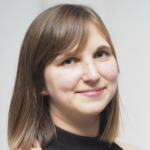
Eva Purkarthofer
Country of origin: Austria
Host institution: Delft University of Technology
Hosting group: Spatial Planning and Strategy, Department of Urbanism
Project:
COLINDA: Collective and Individual Agency in the Governance of Urban Transformations
Starting date: 1 March 2020
Abstract:
A multitude of actors plays a role in shaping urban development policies and their implementation, and also closely affects the power relations inherent to urban development processes. This research project adopts an actor-centred perspective and is specifically interested in the role collective and individual actors play in promoting sustainability and the different behaviours and strategies they employ to foster sustainable urban development. On the one hand, the project aims to clarify the transformative power of individuals (such as administrators, politicians and citizens) to initiate change in planning processes. On the other hand, the project is interested in the practices within organisations in the field of urban and regional planning (such as planning departments or city developers) to support sustainable development.
Agency is particularly important when urban development does not follow linear procedures but unfolds in multi-dimensional and multi-scalar projects and processes. Against the background of social and political fragmentation, rapid technological change and complex global networks, a shift from formalised government-led development to informal governance arrangements can be observed in urban planning. Better knowledge about the role of actors is needed to understand how abstract and ubiquitous objectives like sustainability are operationalised through specific policies and concrete interventions in the built environment. By clarifying the role of collective and individual agency in the governance of sustainable urban development, the project aims to analyse and conceptualise the links between administrative contexts (planning systems), institutional norms (planning cultures) and spatial outcomes (planning practices). The project draws on four case studies from two different countries (Finland and the Netherlands) and combines several research methods (social network analysis, survey, expert interviews and focus group discussions).
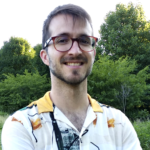
Fer Estévez-López
Country of origin: Spain
Host institution: Erasmus Medical Center
Hosting group: Department of Child and Adolescent Psychiatry/Psychology
Project:
Be active, be healthy… be resilient? Insights into the role of physical activity in brain development during childhood and adolescence
Starting date: 1 August 2019
Abstract:
Physical activity is a major determinant of health throughout the lifespan. The specific neurobiological benefits that may accompany physical activity during childhood and adolescence are still under debate. Psychiatric disorders (e.g., anxiety and depression) are leading causes of disability worldwide. Previous research demonstrated that psychiatric symptoms may precede structural alterations in the brain.
My project aims at examining the role of physical activity in the development of the brain in childhood and adolescence, particularly in the context of resilience to psychiatric symptoms. To do so, I will use data from the Generation R (Rotterdam) Study in children and adolescents. In this study, brain development is quantified with Magnetic Resonance Imaging (MRI) while psychiatric symptoms and physical activity is reported by primary caregivers’ questionnaires.
To date, there is a lack of effective early interventions for psychiatric symptoms. Thus, if physical activity is related to a healthy and resilient development of the brain able to buffer the negative consequences of experiencing psychiatric symptoms, the output of this project has the potential to impact individuals, societies, and policymakers because engaging in physical activity regularly is an easily available, simple, safe and low-cost lifestyle. Indeed, I will participate in talks to make pediatricians, health professionals, and primary and secondary school teachers aware of the importance of physical activity in young people.
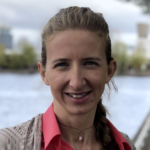
Francesca Noardo
Country of origin: Italy
Host institution: Delft University of Technology
Hosting group: 3D geoinformation
Project:
Multisource Spatial data integration for smart city applications
Starting date: 30 November 2019F
Abstract:
The integration of spatial information from different, highly heterogeneous data sources make spatial information increasingly powerful to analyse the city, simulate phenomena (e.g. noise, air quality, urban flooding), visualise effects of changes, communicate, educate etc.
However, there is still a serious gap to meaningfully integrate spatial data from different sources, because it is hard to overcome the inhomogeneity of original data sources that are a consequence of differences in surveying and modelling (e.g. accuracy, choice of the represented details, conventions, semantics).
This research will result in an innovative methodology to integrate various spatial information and improving it (even guessing information that is not present), to be homogeneous base for specific application support.
The first goal of this research is the automatic unambiguous integration of various spatial information (3D, 2D, design, sensor data) about urban objects, from multiple sources (standardised and not), to overcome semantic differences and correctly exploit it. Semantic web technologies will be the key. An internship in the ‘Leiden-Erasmus-Delft centre for big, open and linked data (BOLD) cities’ will guide and help in this training and research part.
The second goal will be the automatic harmonisation of existing spatial information, through inferred knowledge from existing datasets and procedural modelling. This will lead to a valid support for at least 2 specific use cases for smart cities sustainability: one requiring a low level of detail (LOD) of the spatial data (generalisation case) and one needing a high LOD (refinement case), adding more details/info when not present. The multidisciplinary of the project will have advantage by the collaboration with the three Universities.
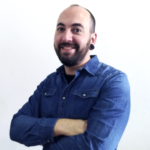
Frederico Marques Penha
Country of origin: Brazil
Host institution: Delft University of Technology
Hosting group: Intensified Reactions and Separation Systems
Project:
UnveiLIN - Unveiling Nonphotochemical Laser Induced Nucleation
mechanisms
Starting date: 1 September 2019
Abstract:
From the production of nanostructured materials, organic electronics, pharmaceuticals to the formation of bones, crystallization is omnipresent. Despite its widespread use, the elementary phenomena of crystallization from solution are far from being completely understood. The process of creating a new solid from a supersaturated phase is called nucleation and it represents a central theme for all kinds of crystallization. Although significant recent advances in the understanding of the mechanism of nucleation of crystals in solution have been developed, controlling nucleation remains a challenge, due to its stochastic nature. Nucleation is crucial to control final characteristics such as number, size, shape and polymorphism of the new crystalline materials, which dictate final product quality, bioavailability of active pharmaceutical ingredients (API). In this sense, a new approach to conduct crystallization from solutions can be provided by Nonphotochemical Laser Induced Nucleation - NPLIN. Evidences point out that NPLIN can control crystal structure, e.g. polymorphism, and drastically decrease induction time. The phenomenon has been demonstrated in aqueous solutions of several compounds and was classified as “nonphotochemical” due to the solutes and solvents not having absorption bands within the range of the applied laser light. Yet, mechanisms involved are still poorly understood, although some hypotheses have been developed. Thus, the aim of this project is to experimentally unveil the mechanisms governing NPLIN, enabling complete understanding of this phenomenon up to a point where it is possible to implement this technology in a scaled-up system.
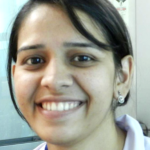
Gunja Mishra
Country of origin: India
Host institution: Erasmus Medical Center
Hosting group: Department of Immunology
Project:
Targeted antigen degradation: A novel therapeutic strategy to enhance the immune response against cancer
Starting date: 1 September 2019
Abstract:
Activating the patient´s immune system to recognize and kill tumor cells is the goal of cancer immunotherapy. Key requirement for this is the induction of potent cancer-specific CD8+ T-cell (CTL) responses. In cancer patients, however, these responses are often compromised on multiple levels, including inefficient CTL activation (priming) and exhaustion. In addition, insufficient antigen presentation on major histocompatibility complex (MHC) class I molecules by the cancer itself can prevent CTL-mediated killing. During the last decades, significant advancements in the immunotherapy of specific cancer types have been reported, includingthe use of therapeutic vaccines (enhancing CTL priming) and checkpoint inhibitors blocking inhibitory T-cell receptors(reverting CTL exhaustion). Interestingly, however, there is currently no immunotherapeutic strategy available to specifically enhance the MHC class I presentation of cancer-associated antigens. Itherefore aim to establish the use of bifunctional degraders (alias proteolysis targeting chimeras or PROTACs) as a novel tool to increase cancer-specific MHC class I presentation.PROTACs are small cell-permeable molecules that can targetspecific proteins for ubiquitin/proteasome-mediated degradation. Supported by recent findings from our group, we hypothesize that targeted degradation of cancer-associated antigens will increase the pool of peptides available for MHC class I presentation and thereby enhance the immunological visibility of cancer cells towards CTL-mediated killing. In my project, I will investigate the immunotherapeutic potential of PROTACs in pre-clinical models of cancer with an initial focus on melanoma. My study will be multi-centric and involve collaborations with the Leiden University Medical Center to perform mass spectrometry-based MHC immunopeptidomics and the Kantonsspital St. Gallen in Switzerlandto study human melanoma-specific CTL responses in the context of PROTAC treatment. The goal of this project is toprovide a rationale for the laborious and costly development of clinically relevant molecules that could be used in future immunotherapies to target cancer antigens in human patients.

Holly Harris
Country of origin: Australia
Host institution: Erasmus Medical Center
Hosting group: The Generation R Study Group
Project:
Development of food selectivity and autism from childhood to early adulthood: The chicken-or-egg dilemma
Starting date: 30 November 2019
Abstract:
Autism Spectrum Disorder (ASD) is a neurodevelopmental condition affecting one in every 60 children. Up to 90% of children with ASD are selective with food; restricted in the type, taste, texture, smell or appearance of food they eat. Food selectivity places children with ASD at high risk of compromised nutrition, growth and potentially, exacerbation of ASD symptoms. How food selectivity and ASD traits develop is poorly understood because the current evidence is limited by low-quality study designs that fail to consider the full continuum of ASD traits in the population. With the incidence of ASD increasing worldwide, clinical therapies used to manage ASD-related food selectivity must be supported by large-scale, epidemiological evidence to prevent long-term diet-related co-morbidities in this population. In response, my LEaDing Fellows research programme capitalises on epidemiological studies in the Netherlands to understand developmental pathways and mechanisms underlying food selectivity and ASD traits from infancy to adulthood. This project importantly captures food selectivity and ASD as it develops – a novel contribution to the complex and fast-evolving ASD literature.
I will collaborate with the Generation R Study Group at Erasmus Medical Center, under the supervision of Dr. Pauline Jansen, to:
- 1. Establish longitudinal pathways between ASD traits and food selectivity from infancy to early adulthood;
- Examine the interaction between ASD traits and food selectivity on diet-related health outcomes; and
- Explore the role of the gut microbiome in the relationship between ASD traits and food selectivity
Knowledge created from the proposed research plan will provide evidence on when to implement and what to target to prevent long-term diet-related chronic diseases related to ASD traits and food selectivity.
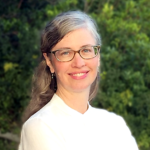
Hope E. Morgan
Country of origin: United States of America
Host institution: Leiden University
Hosting group: Leiden University Centre for Linguistics (LUCL)
Project:
Advancing the lexicography of sign languages: form, meaning, and motivation
Starting date: 1 September 2019
Abstract:
Sign language lexicography has evolved from paper dictionaries consisting of a set of still images corresponding to a single gloss to online dictionaries with video clips and enhanced information about each signed word. Yet despite improvements, the state-of-the-art in sign language lexicography still lacks crucial components that are essential to a full understanding of the lexicon. This project is guided by the overall question, what should a comprehensive model of lexicography for sign languages look like? It will address three specific challenges in the documentation of one sign language in particular, Kenyan Sign Language (KSL): (1) a lack of textual corpora for determining dictionary senses and (2) sign etymologies derived through (a) iconic mappings and (b) gestural origins.
Innovative solutions to these challenges include the creation of an online lexical semantic map of KSL that depicts word relations elicited from fieldwork (i.e., synonyms, antonyms, hypernyms, etc.); a new corpus of prototypical KSL sentences; a computational analysis from 50+ hours of existing annotated KSL; a study measuring degrees of conventionalization for KSL signers of iconic mappings in signs; interviews with attendees of the first Kenyan deaf schools in the 1960s to document the origins of the first KSL signs; and an analysis of the gestural origins of current KSL signs. This project will lead to a final lexicographic product developed in association with linguists and lexicographers at Leiden University Centre for Linguistics and the Institute for Dutch Lexicology, as well as a capstone paper synthesizing the findings, and publications of the individual studies described above. This project seeks to improve how sign languages are documented, especially in developing ountries like Kenya that lack funding for large-scale sign language research projects.
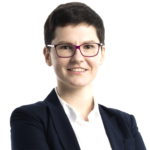
Justyna Tasic
Country of origin: Poland
Host institution: Delft University of Technology
Hosting group: Multi-Actor Systems Department
Project:
Multilevel Governance for Urban Resilience
Starting date: 18 November 2019
Abstract:
Resilience is the most desired capability of cities. The speed and scale of urbanisation, along with the climate change require urban areas to transform. Therefore, traditional approaches to planning have to be replaced with resilience as the key governance principle that helps cities to withstand disruptive shocks, adapt, learn and grow.
This interdisciplinary study is part of a growing body of research on urban resilience, and multilevel governance. In particular, it brings both hitherto fragmented streams together by exploring the role of multilevel governance for urban resilience.
Urban governance brings together different actors with conflicting interests and diverse resources (political, legal, economic, and cognitive). Successful urban transformations require harmonised coordination at multiple levels. Literature on multilevel governance neglects the complex dynamic interlinkages between social and technical infrastructure – although transformation of infrastructures such as renewable energy solutions or smart cities shape and deeply influence urban resilience. As a result, there is a lack of understanding how arrangements of multilevel governance shape the design and implementation of urban transformations, and in turn how those processes affect urban resilience. In response to this gap, this research aims to answer how urban resilience can be enhanced through sociotechnical transformation at multiple governance levels.
The research uses a case study approach to analyse multilevel governance arrangements and sociotechnical transformations of critical infrastructure systems in two Dutch cities. In particular, combining advantages of qualitative and quantitative methods, the study provides new insights on how multi-actor relations are shaped across governance levels, and how those arrangements guide sociotechnical system transformation for urban resilience.
By addressing the problem of sociotechnical transformations for urban resilience, the research significantly contributes to theory and practice of urban governance and planning.
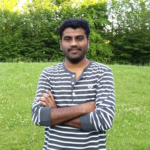
Krishna Gavvala
Country of origin: India
Host institution: Leiden University
Hosting group: Leiden Institute of Chemistry
Project:
Unraveling Mechanistic Steps in Transcription Regulation in Bacteria via Chromatin Re-organisation
Starting date: 1 July 2019
Abstract:
Regulation of gene activity is fundamental to life and occurs via numerous mechanisms. Like
every other organism, bacteria also need to fit their chromosomal DNA into the cell. The
compact structure that contains the bacterial DNA is called the nucleoid. One of the factors
that contribute to the compaction of the DNA into the nucleoid are the so-called nucleoid associated proteins (NAPs). In bacteria, binding of (NAPs) to DNA determines whether a gene is silenced or permissive to transcription. Gene expression is known to respond to cues from the environment such as changes in osmolarity, pH, temperature. Although attempts made to unveil the effect of environmental signals on binding of NAPs, a mechanistic insight on how they affect transcription regulation is still unclear. Even so the binding mode of NAPs to DNA is a longstanding debate. Due to this lack of knowledge, control of bacterial fitness and pathogenicity in biotechnological and medical context is limited.
Here, I aim to work on one of the NAPs, the H-NS protein, the most prominent NAP
and master regulator of bacterial gene expression. The key question of my project is to solve
how conformational changes in H-NS, which are thought to change DNA binding properties
alters the gene expression. Of particular interest will be to study the mechanical properties
and stability of the H-NS-DNA complexes and the effects of these complexes on gene activity
in vitro and in vivo. Building upon my keen interest in the field and with the host team’s
expertise in the functions of H-NS, I will aim to uncover changes in DNA organization and
transcription in the test tube and in the live cell. Direct imaging is invaluable for understanding the mechanism of complex genome transactions where protein-DNA interaction is crucial phenomenon. Here, I will use in vitro single-molecule techniques (both force and fluorescence based), structural biology and microscopy to visualize genome conformation. I shall also verify the interaction of H-NS with DNA and type of complexation using the SFM technique by collaborating with Prof. Wyman at one of the partner institutes, the Erasmus Medical Center. This multidisciplinary approach will unravel the pathway from environmental stimulus via altered gene expression to the phenotypic response of the bacterium. As chromatin organization in all forms of life relies on similar principles, the
knowledge gained from these studies extends well beyond the field of bacterial chromatin to
explain the interplay between chromatin organization and transcription. This new knowledge will provide tools for controlled interference with bacterial genome organization and gene expression, which provides opportunities for development of alternatives to
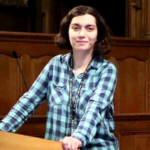
Lavinia Marin
Country of origin: Romania/ Belgium
Host institution: Delft University of Technology
Hosting group: Ethics/ Philosophy of Technology
Project:
Reconceptualising Critical Thinking for Online Environments: Extended, Embodied, Social
Starting date: 1 January 2020
Abstract:
There is a growing concern that online social platforms are actively facilitating the spread of misinformation with detrimental effects for democratic citizenship. One of the most popular solutions to counteract this tendency has been the proposal to implement education for critical thinking at younger ages and at all levels of education, following the intuition that a critical thinker should also a critical online user who will not take things for granted nor spread misinformation further. However, the current project aims to problematise the assumption behind this solution by raising the question whether critical thinking can be exercised just as easily in online environments as it is in offline environments.
The hypothesis proposed here is that the (technical) environment in which we are asked to think matters more than it was previously thought for exercising critical thinking (CT). The original starting point of this project is the premise that critical thinking has been thus far conceptualised as an individual, personal trait, following an undisclosed internalist theory of the mind. However, if we were to reconceptualise CT following an extended and embodied theory of the mind, then this would allow for a new understanding of the online environment as a tool to think with or against, thus implying that online informational resources could be designed in different ways as to allow for more critical thinking.
By shifting the focus of the critical thinking discussion from the individual subject to the environment in which the user exercises these capacities, it makes sense to study which environments inhibit or foster critical thinking, with a focus on online platforms.
This project has two major aims: first, to re-conceptualise critical thinking in light of an extended and embodied theory of the mind. The second aim is to research the kind of design features that an online environment needs to have minimally in order to become a better environment for critical thinking and theorise the relation between the emergence of critical thinking online and the design features of the informational environment.
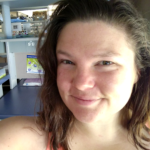
Leslie Sanderson
Country of origin: Canada
Host institution: Erasmus Medical Center
Hosting group: van Ham lab
Project:
Microglia shaping the human brain
Starting date: 15 July 2019
Abstract:
Neurological diseases, such as Alzheimer’s and dementia, are a critical public health concern. Increasing prevalence compounded by progressive disability, an aging population, and a distinct lack of treatment options have emphasized the urgent need to understand how brain health deteriorates and how it may be restored. In humans, a progressive loss of microglia - the immune cells of the brain - leads to the gradual breakdown of the brain’s white matter - the “wiring” of the brain. This indicates that microglia play crucial, unidentified roles in the maintenance of brain integrity that may hold the key to preventing, or even reversing, the symptoms of many degenerative brain diseases.
My work at Erasmus Medical Center will employ zebrafish models of human disease to explore how microglia promote brain health. In collaboration with the Department of Imaging Physics at TU Delft, I will take advantage of the optical transparency of this model system to directly visualize the in vivo, real time functions of microglia and the consequences of their loss on the brain. An additional partnership with the Leiden Genome Technology Center will enrich these observations with single-cell transcriptomics and leading edge high-content data analyses. Critically, through existing collaborations with neurologists at the Erasmus MC Alzheimer’s Center and geneticists at the Leiden University Medical Center and Erasmus MC, discoveries I make will be translated directly to human disease. These data will provide crucial insight into the progression of degenerative neurological conditions and form the basis for the development of microglial-based therapeutics.
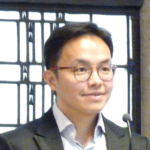
Ling Shan
Country of origin: China
Host institution: Leiden University Medical Center
Hosting group: Department of Neurology Leiden University
Project:
Narcolepsy with cataplexy: systematic search for proof for the autoimmune attack
Starting date: 1 November 2019
Abstract:
Human narcolepsy is an invalidating chronic sleep disorder characterized by excessive daytime sleepiness, cataplexy, hypnagogic hallucinations, sleep paralysis and disturbed nocturnal sleep. These symptoms are caused by an inability to maintain wakefulness combined with the intrusion of partial expressions of rapid eye movement sleep into wakefulness. It is currently not known whether the presumed autoimmune attack causing narcolepsy is limited to hyprocretin/orexin cells or also expands to other cell groups involved in the regulation of arousal. There is also lacking knowledge of the consequences of hyprocretin/orexin cell loss on the various systems involved in arousal and or the impact of pharmacological treatment on all these cells.
This work builds on our recent publication in Science Translational Medicine of a surprising long-term effect of opiate drug use: an increase in the number of hypothalamic hypocretin/orexin cells, which might even ameliorate symptoms of narcolepsy, such as cataplexy. This finding generated considerable interest with a published commentary by Nature review neuroscience, pointing out the therapeutic potential for narcolepsy with cataplexy. Before this treatment can be undertaken, a better understanding of the neuropathological changes in the dopamine and other arousal systems including the histaminergic tuberomamillary nucleus, the noradrenergic locus coeruleus, the cholinergic basal forebrain nucleus and the serotonergic raphe nucleus in well clinically documented human subjects is urgently needed. We will perform a comprehensive clinical and neuropathological examination of these arousal systems in a unique collection of narcoleptic post-mortem brains.
This leading fellowship will result in a collaboration between world leading narcolepsy researchers Prof. Gert Jan Lammers and Dr. Rolf Fronczek; and world leading post-mortem neuropsychiatric disorder researcher Prof. Dick Swaab. Because of their involvement, we will be able to use the extensive clinical information and bio-banking recourses from the Netherlands Brain Bank (https://www.brainbank.nl) and the European Narcolepsy Network (www.eu-nn.com).
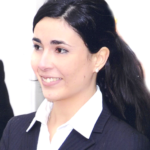
Livia Angeloni
Country of origin: Italy
Host institution: Delft University of Technology
Hosting group: Department of Precision and Microsystems Engineering, section of Micro and Nano Engineering
Project:
HARNESSING MICROFLUIDIC ATOMIC FORCE MICROSCOPY AND ELECTRON CRYO-MICROSCOPY FOR STRUCTURAL CELL BIOLOGY
Starting date: 1 August 2019
Abstract:
In transmission electron cryo-microscopy (cryo-TEM/cryo-EM), biological macromolecules are imaged that are embedded in a flash-frozen (vitrified) liquid film. It enables to obtain three-dimensional (3D) structural information under near-native conditions and at near-atomic resolution. However, the use of cryo-EM for the molecular-level investigation of subcellular structures is still limited by complex sample preparation procedures. They have low throughput and high probability of damage to the region of interest. In particular, there are currently no efficient methods that allow isolating specific structures of interest from the cellular environment for subsequent imaging. The objective of my project is to develop a microfluidic atomic force microscopy (AFM)-based procedure to directly harvest subcellular structures and prepare samples suitable for cryo-EM analysis.
Hollow AFM probes with a pressure-controlled microfluidic channel will be used to penetrate the cell, extract a target structure and dispense it onto a TEM grid for vitrification. As a proof-of-concept I will apply the procedure to study structural aspects of autophagy - a catabolic process responsible for cellular homeostasis. Within this project, I will develop a unique tool to structurally study, at high resolution, the molecular-level interactions and crosstalk of the autophagy pathway with biomaterials. More broadly, the outcome will provide a novel, unique and reproducible methodology for the preparation of cryo-EM samples of subcellular structures, which cannot be obtained by conventional sample preparation techniques.

Mandy Visser
Country of origin: The Netherlands
Host institution: Leiden University Medical Center
Hosting group: Geriatrics in primary care
Project:
COMMUNICATE: a simulation tool to practice (advance care planning) conversations with people with dementia.
Starting date: 16 December 2019
Abstract:
In 2018, 270,000 people living in The Netherlands are expected to be diagnosed with dementia. This presents a huge personal burden for patients and caregivers and an economical burden for society. Planning advance care in early stages of dementia, incorporating individuals’ wishes and needs, is important to secure quality of life and regulate health costs. With the proposed fellowship, I aim to improve communication between people with dementia, their family members and direct care staff (nurses, care workers, allied health professionals, volunteers), by developing the COMMUNICATE simulation tool to practice (advance care planning) conversations with people with dementia.
The fellowship builds on research by Leiden University Medical Center (LUMC) on communication between professional caregivers and people with dementia on advance care planning, strengthening collaborations with other universities and organizations in and outside the Medical Delta. Currently, I am affiliated with University of Technology Sydney and my work and expertise entails behavioral changes of people with dementia, related to their condition (e.g., Alzheimer’s disease, Frontotemporal dementias), and translates to practical communication strategies to be used by family members and direct care staff.
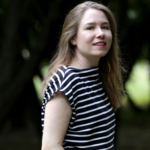
Marzia Loddo
Country of origin: Italy
Host institution: Delft University of Technology
Hosting group: Department of Architectural Engineering and Technology AE+T, section Heritage and Architecture
Project:
DIPOT: Digital Depot. A dynamic 3D representation of art collection storage facilities as a learning resource to build critical engagement and improve future design
Starting date: 1 October 2019
Abstract:
The project investigates the various narratives of museum transformation in the Netherlands after the Delta Plan (1990) in all its cultural, political and economic aspects. In particular, the first phase will investigate the role that museum storage facilities have played in the transformation and the different approaches that have been implemented. Through different case studies and direct experiences these transformations will be analysed during the second phase. The goals of these two phases will present the results from the points of view of different museum actors (first goal) and an overview of the building typologies from the different case studies analysed (second goal).
The training portion is an important and meaningful part of the program, which will be divided between an internship and different courses aimed at improving my research and teaching skills for the best development of the postdoc research and my future career in and outside of academia (third goal). As a LEaDing Fellow researcher, I will have the opportunity to interact intensively with collaborators at Leiden University and the Centre for Global Heritage and Development (of which I have become a member of the Heritage & Identity group).
This research aims to build upon the legacy of the progressiveness of Dutch museums in developing new approaches to storage facilities by developing new VR technologies that could provide completely unprecedented access and experience of museums’ deposits. This project would help to change the thinking of deposits from simply being an afterthought in the mind of the public and designers to valuing them as the crucial component of museums that they are (fourth goal).
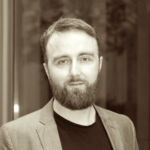
Matthew James Dennis
Country of origin: United Kingdom
Host institution: Delft University of Technology
Hosting group: Department of Values, Technology, and Innovation
Project:
Technologies of the Self for 21st Century Life
Starting date: 1 October 2019
Abstract:
Over the last decade an increasing number of apps have been designed to cultivate human flourishing. Once downloaded, these apps guide and monitor how we cultivate our well-being, notifying us with a buzz or a beep when we act in ways that harm our life-goals, offering us tips on how to lift our emotional state, or advising us on how to fine-tune our exercise regimes. The developers of such self-care apps claim that they can radically improve the practice of self-care, and that these products offer unique ways to cultivate human flourishing.
Today such self-care apps are created and developed by teams of programmers, entrepreneurs, and industry executives using psychological models of well-being derived from self-help literature. Not only are many of these teams incredibly demographically homogenous, they primarily exclusively understand human flourishing as the subjective experience of well-being, ignoring other factors that philosophers believe are essential for a flourishing human life. I believe that bringing ethicists and practical philosophers into discussion with those that claim that app-based technologies can cultivate human flourishing can show how technologies of self-care might be radically enriched to better serve our practical lives
My project will show that self-care apps can be improved by drawing on the philosophical understanding of human flourishing. By thinking more deeply about what flourishing involves, I believe that we can design self-care apps in ways that enable their end-users to engage in more protracted and meaningful processes of self-development. To do this, I will explore the various conceptions of human flourishing currently operating in the app-based self-care industry, and will construct a series of ethically-informed directives detailing precisely how these conceptions could be enriched. I will also investigate the methods app-based self-care companies currently use to increase flourishing, showing how app-based tools can be improved with the resources of the philosophical tradition of self-cultivation.
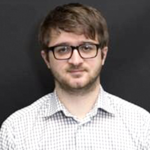
Nicolas Drouin
Country of origin: France
Host institution: Leiden University
Hosting group: Leiden Academic Centre for Drug Research, Analytical BioSciences and Metabolomics
Project:
New protocols for high throughput metabolomics
Starting date: 15 November 2019
Abstract:
As a direct consequence of gene expression, protein activity, cellular metabolism as well dietary habits and environmental exposure, metabolites reflect someone’s actual health state and therefore represent an important source of potential biomarkers. Their discovery is a long process, requiring large patient cohorts for identification of potential biomarkers and their confirmation.
However, the current metabolomics practices are not adequate for the analysis of such large number of sample, especially for measuring several time points per patient to find early markers of a disease. Indeed, long analytical analysis time and the necessity to include several orthogonal analyses lead to an analysis rate of about one sample per hour to achieve confident identification, large metabolome coverage and accurate quantification for biomarker discovery using a number of injections. Therefore, new high throughput protocols are needed to meet requirements of population size metabolomics.
In the current project, we expect to develop new workflows for a deep metabolomic profiling suitable for large cohort studies (> 1000-10000 samples). The method must meet the criteria for analysis throughput (<5min/analysis) and cost (<40€/sample), provide unambiguous identification of metabolites and quantify (absolute or relative) a large number of molecules with diverse chemical properties that make up the metabolome (>1000 compounds), including highly polar metabolites (amino acids, organic acid, phosphorylated compounds), as well as lipophilic compounds (such as fatty acids or steroids). Together with collaborators in Erasmus MC, data collected using the new HT metabolomics platform will be combined with existing genetic, clinical and imaging data to find new early biomarkers associated with Alzheimer’s and other neurogenerative diseases
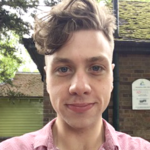
Robert Stockill
Country of origin: United Kingdom
Host institution: Delft University of Technology
Hosting group: Department of Quantum Nanoscience
Project:
QNOME (Quantum Networks of Opto-Mechanical Entanglement)
Starting date: 1 December 2019
Abstract:
The ability to distribute quantum states over long distances provides a revolutionary means of communicating and processing information. The reach of such a quantum network can be expanded significantly through the operation of intermediate repeater nodes, capable of both sharing and storing nonlocal correlations. The physical makeup of these waypoints are accordingly the subject of intense research across a wide range of optically-active quantum systems.
This project is aimed towards realising a fully tailorable, on-chip quantum repeater node operating natively in the low loss optical telecom band. We plan on achieving this goal by using long-lived mechanical vibrations in patterned silicon nanobeams as a quantum memory. Once cooled to near their ground state, single quanta of motion can be created from the radiation pressure force of light confined to a coincident optical cavity. In particular, we will fabricate and operate coherent multi-mode devices, capable of forming long-range entangled states and allowing for the local measurements that link remote nodes together. This project will take place in the group of Dr. Simon Gröblacher within the department of Quantum Nanoscience at the TU Delft, combining the advanced in-house nanofabrication available with cutting edge techniques in the generation of nonclassical states of motion.
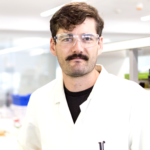
Ross Hogue
Country of origin: New Zealand
Host institution: Leiden University
Hosting group: Leiden Institute of Chemistry
Project:
Molecular ‘pacman’ and ‘hangman’ iron catalysts for the
water oxidation reaction
Starting date: 1 October 2019
Abstract:
Decreasing our dependence on fossil fuels to reduce the effects of global warming whilst meeting an increasing energy demand is one of the biggest challenges we have faced as a society. Solar energy, for which the supply reaching Earth is orders of magnitude greater than our energy demand, is the best solution, however we lack the technology to sufficiently store this energy. Water splitting allows one to convert solar-generated electrical energy to chemical energy and thereby overcome the solar supply-demand mismatch. Within the overall water splitting reaction, the half reaction wherein water is oxidized is the bottleneck. Efficient catalytic materials for water oxidation based on abundant elements, as well as a better fundamental understanding of the reaction, are required to drive forward research towards economically viable water splitting technologies.
New molecular water oxidation catalysts that are based on abundant iron are the target of this research. “Pacman” molecular catalysts featuring two iron centres held in close proximity are designed such that the two iron centres work synergistically to form O2 from H2O. “Hangman” molecular catalysts featuring one iron centre with a pendant water-activating group are designed to facilitate the interaction of water with the catalytic iron centre. The most efficient systems, i.e. pacman or hangman design, will be developed further with a view to explore subtle structure-function relationships. This will allow for the fine-tuning of catalyst performance through careful molecular design, with the aim of synthesising iron catalysts that can compete with expensive rare-earth metal catalysts.
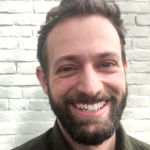
Samuel Franklin
Country of origin: United States of America
Host institution: Delft University of Technology
Hosting group: Design Aesthetics, Department of Industrial Design
Project:
The Concept of Creativity
Starting date: 1 September 2019
Abstract:
In popular discourse “creativity” is held to be the key ingredient to both economic progress and spiritual wellbeing, and a veritable industry has arisen to explain how it works and how to unleash it. Yet creativity is also a vague term that may obscure as much as it illuminates: Is it a trait or a process, artistic or just inventive? Just as striking, the term itself is rarely found before about 1950, when it exploded into our everyday lexicon. How did a word that can mean so little very quickly come to mean so much?
My research describes the function of the concept of creativity in contemporary society. Combining cutting-edge methods in digital humanities with archival research and literary analysis, I trace the discourse of creativity since the end of World War II to the worlds of consumer capitalism, including tech, design, and advertising. There, creativity’s definitional capaciousness may not be a bug but a feature, usefully blurring the lines between art and invention, work and play, and genius and everyday ingenuity. What, then, does such blurring do, both practically and ideologically, for those in the so-called “creative industries”? And what are the larger implications of our broad cultural embrace of creativity as an aspirational value? Is the mandate to “be creative” a blessing or a burden, and how can we square our obsession with the new with the need for environmental sustainability?
This research, which will result in a book, articles, an online digital work, and the beginnings of a second project, will entail a variety of new methodological skills and knowledge to be found among the interdisciplinary scholars in the Design Engineering faculty at TU Delft as well as a number of Social Science and Digital Humanities scholars in the larger LDE network.
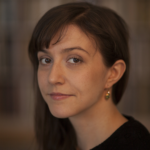
Sara Sammallahti
Country of origin: Finland
Host institution: Erasmus Medical Center
Hosting group: The Generation R Study
Project:
Prenatal exposure to maternal stress and fetal growth as predictors of neurodevelopment
Starting date: 1 June 2020
Abstract:
Maternal health and wellbeing are important for child wellbeing, but how does maternal wellbeing affect the offspring during the crucial first nine months – the fetal period?
Maternal stressors such as depression during pregnancy are associated with adverse neurodevelopmental and behavioural outcomes in the offspring, but the mechanisms underlying this association are unclear. Fetal growth is as an important marker of early adversity: several environmental exposures including maternal stress can affect fetal growth, and fetal growth patterns are associated with early differences in the maturation of the brain. However, studies that would link prenatal stress, fetal growth patterns beyond crude proxies such as birth weight, and child neurodevelopmental outcomes are scarce. Furthermore, more evidence from longitudinal studies are needed to understand the neurodevelopmental pathways that originate before birth and could link prenatal exposure to maternal stress with child behavioural problems.
In the current project, we aim to investigate whether exposure to maternal stress during pregnancy is associated with brain structure, connectivity, and functioning of the child brain in school-age. We will examine various stressors, including maternal mental health measured during pregnancy using questionnaires, and child neuropsychological assessments and neuroimaging data. We will investigate if distinct fetal growth patterns associate with the child outcomes, and aim to identify neural correlated of psychopathology following prenatal stress exposure. The study will be conducted within the larger Generation R Study, a longitudinal population-based cohort of 9,778 mother-child dyads based in Rotterdam, the Netherlands.
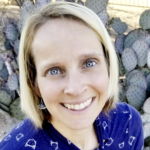
Sarah Young
Country of origin: United States of America
Host institution: Erasmus University Rotterdam
Hosting group: Erasmus School of History, Culture and Communication
Project:
Police-Public Engagement: Cross-Cultural Use of Social Media
Platforms to Mobilise Citizens
Starting date: 15 August 2019
Abstract:
Law enforcement (LE) engagement with the public both on and through social media sites is an increasingly important means of gathering data about criminal activity and presenting a positive face for policing activities. As such, it has become a critical area of research in which scholars are assessing its impact on socio-political practices.
The goal of this research is to conduct a pan-European comparison of LE agencies in the Netherlands, UK, and Austria to define and detail emerging trends and patterns within state/public social media engagement against the backdrop of similar tactics that have become prominent within the United States. A critical component of this research is its cross-cultural examination of social media, and this is important because not only does it allow for an assessment of Dutch and European methods, but it also provides evidence for what the US and other nations can glean from the Netherlands and Europe (and vice versa) in terms of social justice, human rights, privacy, and security.
Drawing on over a decade of experience doing government background investigations in the US, the research expertise of scholars Jason Pridmore, Daniel Trottier, and others at the Erasmus Research Centre for Media, Communication and Culture, and scholars at the Security Studies Program at Leiden University, I will analyse current social media practices of law enforcement agencies within the selected countries, conduct interviews, engage in participant observation, and do document analyses to produce a comprehensive set of country-specific case studies which will be analysed through interdisciplinary means drawing on scholarship from surveillance and information studies, sociology, criminal justice, technical communication, media studies, rhetoric, and composition.
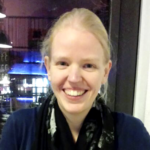
Saskia du Pré
Country of origin: The Netherlands
Host institution: Erasmus Medical Center
Hosting group: Group of Dr. Wendy van de Sande
Project:
Development of a genetic transformation strategy for Madurella mycetomatis as a tool to unravel the genes involved in grain formation during mycetoma infection.
Starting date: 1 September 2019
Abstract:
Mycetoma is a tropical neglected disease that is mainly caused by the fungus Madurella mycetomatis. In highly endemic regions 8.5 cases per 1000 inhabitants are reported, but treatment remains difficult. Only 27% of all patients will respond to treatment and often amputations have to be performed.
One of the reasons behind this poor therapeutic outcome is the fungus’ ability to form so called grains once inside the host. These grains are a protective structure composed of fungal hyphae embedded in a hard cement material, making the fungus difficult to access for the host immune system and drugs. Therefore, novel drugs for mycetoma need to be able to penetrate the grain or prevent grain synthesis, however, the process of grain formation is not understood.
The lab of Dr. Wendy van de Sande at Erasmus MC has recently identified genes that appear to be associated with grain formation. To determine whether these genes indeed play a role in the formation of grains, knock-out strains are needed, however, no knock-out strategy is available for M. mycetomatis.
Therefore, during my fellowship in the lab of Dr. Wendy van de Sande I will have two main aims. The first aim is to develop a genetic transformation protocol for M. mycetomatis. This will be done in collaboration with Dr. Arthur Ram from Leiden University, as he has a lot of experience in molecular fungal biology.
The second aim is to use this protocol to create knock-out strains of the identified genes and test these strains for grain formation in Galleria mellonella larvae. The outcome of this study will lead to the addition of a research tool for studies involving M. mycetomatis, increase our understanding of the process of grain formation and contribute to the development of novel drugs for mycetoma infection.
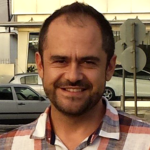
Thanos Koulos
Country of origin: Greece
Host institution: Erasmus University Rotterdam
Hosting group: Department of Public Administration and Sociology
Project:
The Nationalization of Cyber-Space
Starting date: 1 November 2019
Abstract:
Next to land, water, air and space, cyber-space is the complex socio-technical setting often called the ‘fifth domain’. Nationalism has taken over the organization of the first four domains, in the form of constructing national states, national territorial waters and national airspace. The basic proposition of the project is that the ideology of nationalism has infiltrated also the fifth domain – the cyber-space – in two ways. First, through state-led cyber-nationalism via official government websites that present ‘national’ achievements and propagate the official state positions on disputes about territory, symbols or history. Second, through individual communities who use the internet to sustain a sense of national belonging and/or to promote and disseminate their nationalist ideals. Both ways are important in an online national identity (re)production framework that in a fluid, global, modern world functions supportively to the traditional national identity (re)production mechanisms. Moreover, as competing traditionally framed national identities and ideologies can lead to wars, the same way competing online national identities and ideologies can lead to cyber-wars.
The project aims to examine the patterns of the nationalization of cyber-space from both state-led institutions and individual groups that: a) aim to enhance national identity and the sense of national belonging in a globalized world; and b) may lead to nationalist cyber-attacks. Through an analysis of the intrusion of nationalist ideology in the cyber-domain and the digital reconstructions of national identities, the project aspires to develop the patterns of nationalist cyber-attacks. This will allow for a better understanding of cyber-security issues that relate to nationalism and aspires to develop a framework of cyber-defence, necessary to every state’s cyber-arsenal.
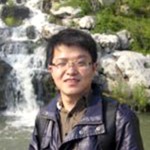
Wei Tang
Country of origin: China
Host institution: Leiden University
Hosting group: Supramolecular and Biomaterials Chemistry
Project:
Bioactive squaramide-based supramolecular materials to modulate the epigenetic landscape of hBMSCs in chondrogenesis
Starting date: 16 September 2019
Abstract:
Osteoarthritis (OA), the most common of arthritic conditions, is a social and financial burden to all nations. To resist the effects of OA, human bone marrow-derived mesenchymal progenitor cells (hBMSCs) have been widely employed for the aim of regenerating cartilage in research, yet the cartilage derived from such cells is highly prone to hypertrophy. Through examining in vitro engineered neo-cartilage from hBMSCs, the group of Prof. Meulenbelt and Dr. Ramos (LUMC) has shown that their DNA methylation landscape is entirely different from autologous cartilage, and the long-term consequence and effect of these foreign body cells when delivered to articular joints are largely unknown. Within the fields of tissue engineering and regenerative medicine, there is growing recognition of the importance of the biophysical microenvironment provided by materials to stem cell function and lineage commitment through bidirectional signaling cascades.
The dynamic reciprocity encountered in cell-matrix interactions are likely mediated by epigenetic control, however this is often overlooked in synthetic polymer materials. The group of Dr. Kieltyka synthesizes supramolecular materials that can mimic features of the natural extracellular matrix for applications in regenerative medicine.
In this project, I will combine expertise of both groups to fully unleash the potential of this new generation of materials for application in cartilage regeneration by improving their mechanical character and the introduction of specific bioactive cues aiming at increased chondrogenic potential of hBMSCs in 3D cell culture by their steering towards a more autologous epigenetic landscape to avoid recurring hypertrophy. Firstly, I will synthesize new supramolecular hydrogel materials based on a double network architecture that show the mechanical properties of articular cartilage with the capacity to include bioactive peptides from the cartilage microenvironment. Secondly, various short peptides from the cartilage matrix will be ligated in a range of ligand densities by conjugation strategy to vary stiffness for 3D cell culture of hBMSCs. Finally, most promising biomaterials will then be selected for in-depth and long-term characterization.
The interdisciplinary approach taken in this project will create strong synergy between materials chemistry, namely in the preparation of dynamic ECM-mimicking polymer hydrogels, and epigenetics of stem cell biology to advance the therapeutic use of hBMSCs. Together, this project will cross critical barriers at the leading edge of the fields by creating biologically relevant cell-specific microenvironments similar to that of articular cartilage.
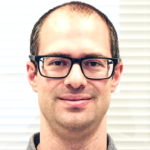
Zoltan Kellermayer
Country of origin: Hungary
Host institution: Erasmus Medical Center
Hosting group: Department of Hematology
Project:
Targeting the multiple myeloma microenvironment
Starting date: 1 September 2019
Abstract:
Multiple myeloma (MM) is a frequently occurring leukemia that makes up approximately 10% of all newly diagnosed hematological malignancies. While novel treatment modalities have dramatically increased initial response rates in MM patients, virtually all patients eventually experience disease relapse. To date, MM still is an incurable disease. In the bone marrow, MM cells are embedded in a specialized micro-environment that provides the malignant cells with growth factors and survival signals. Targeting the non-malignant micro- environment in MM holds the promise of significantly improving therapy efficacy. A major hurdle in the development of micro-environmental targeting strategies is lack of knowledge on the exact identity of the MM-supporting niche cells.
I will use single cell RNA-sequencing data and Imaging Mass Cytometry to identify and unravel MM-supporting niche cell subsets. Subsequently, I will identify and test niche factors as potential therapeutic targets in in-vitro 3D co-cultures of stromal cells with MM cells in which the niche can be genetically modulated. I will be working at the department of Hematology at the Erasmus MC, under supervision of Dr. T. Cupedo and in close collaboration with Prof. P. Sonneveld. I will be mentored in writing a manuscript and a grant based on the results from the project, and have selected courses in Leiden and Rotterdam. I will perform a secondment at the LUMC Leiden in the group of Prof. F. Koning (training in Imaging Mass Cytometry) and a second secondment at SimOmics, in York, UK (training in computational science, systems biology and large dataset analysis).
In sum, this LEaDing Fellows application will provide me with the opportunity to perform cutting- edge research and contribute to understanding MM pathology and ultimately to MM treatment. In parallel I will acquire a skill set that will allow me to progress into an independent physician-scientist, or an alternative science-related career in a for-profit organization.
